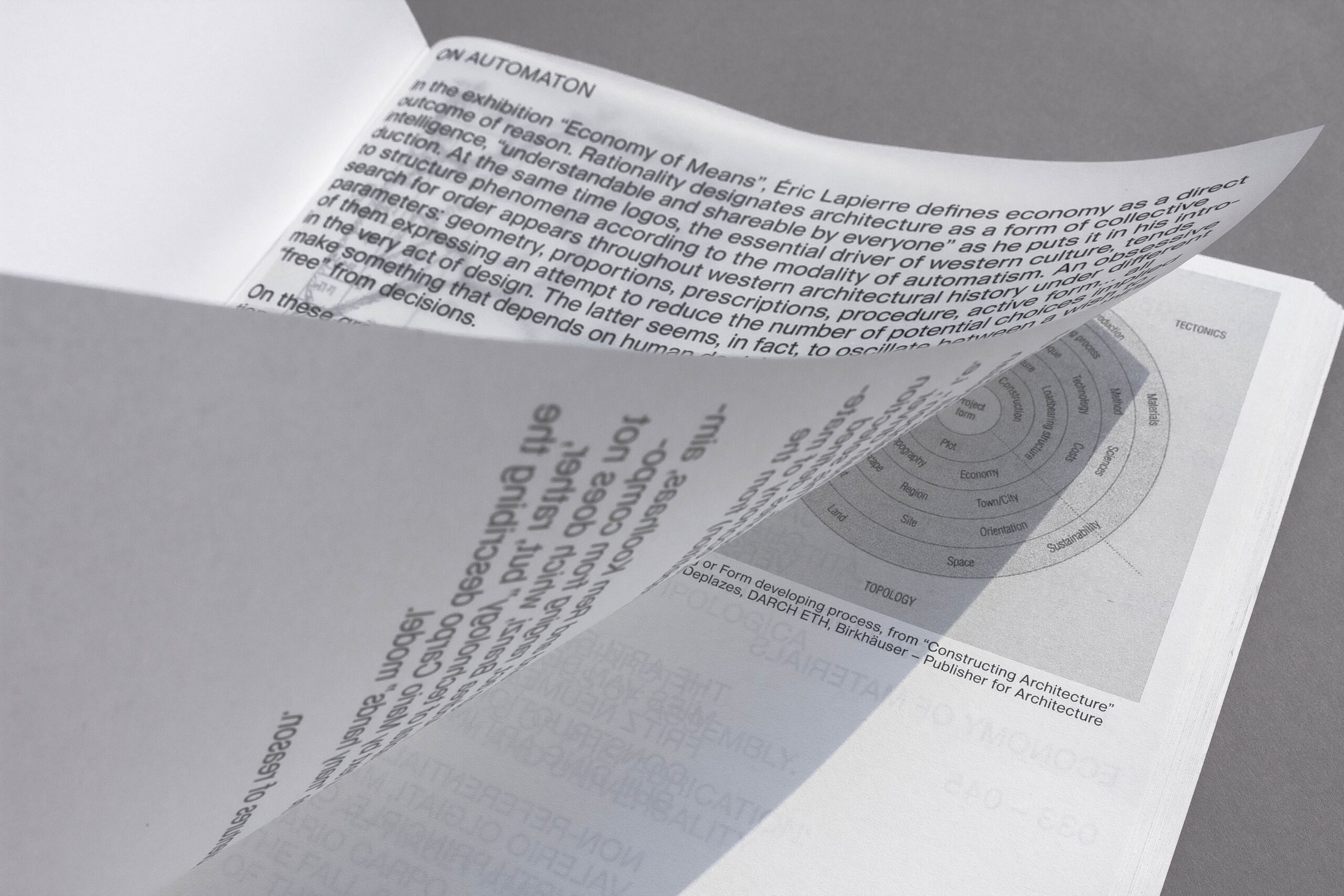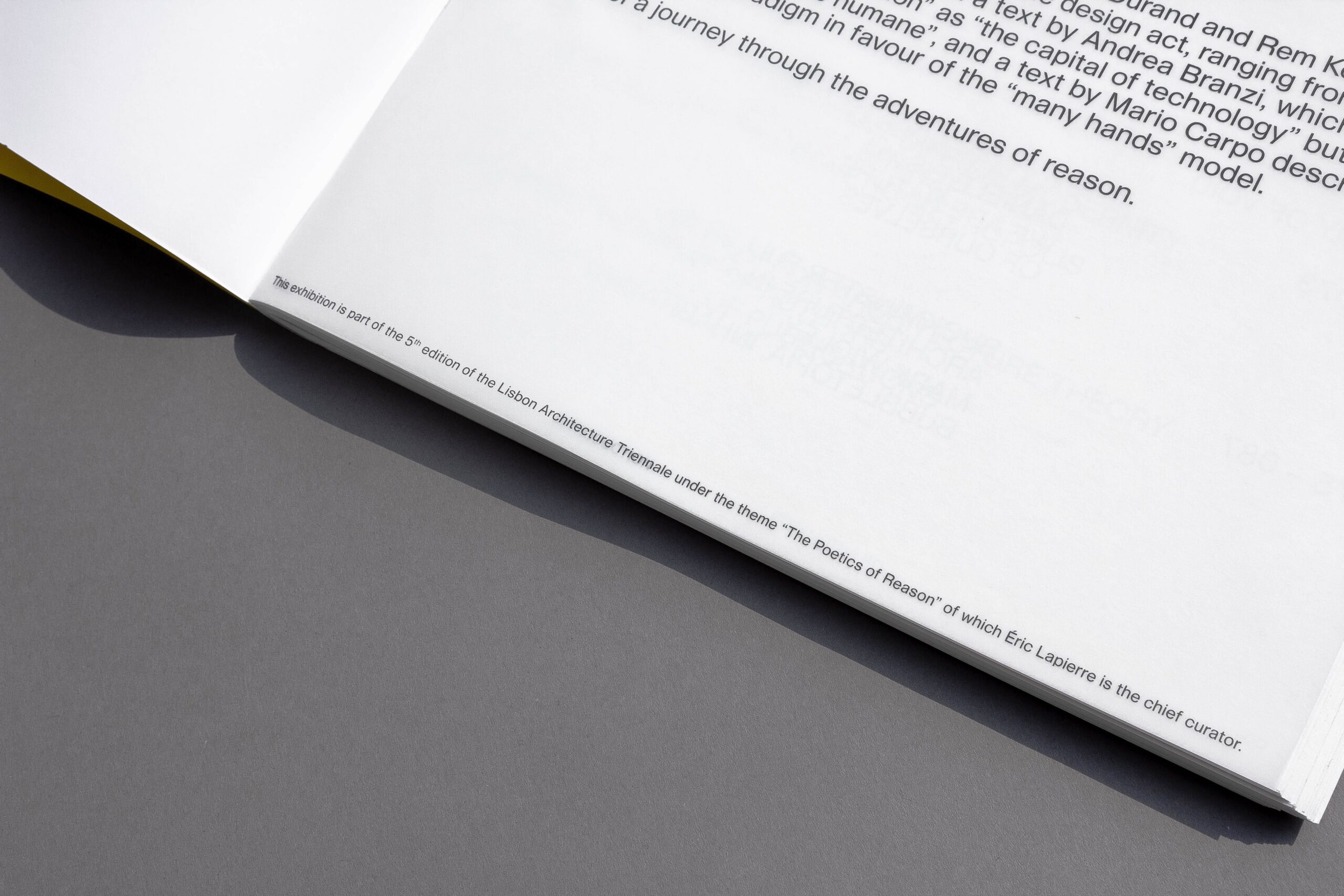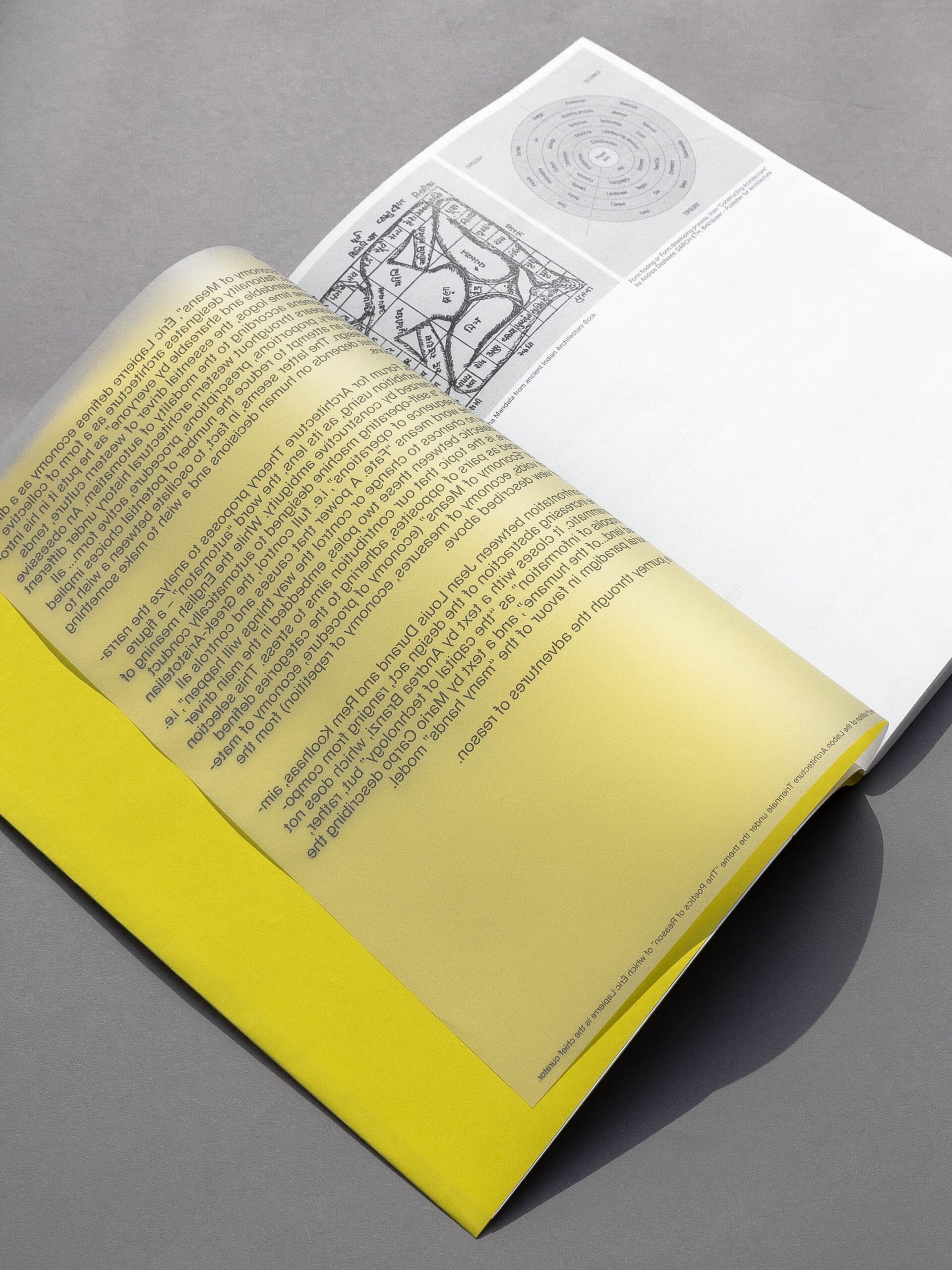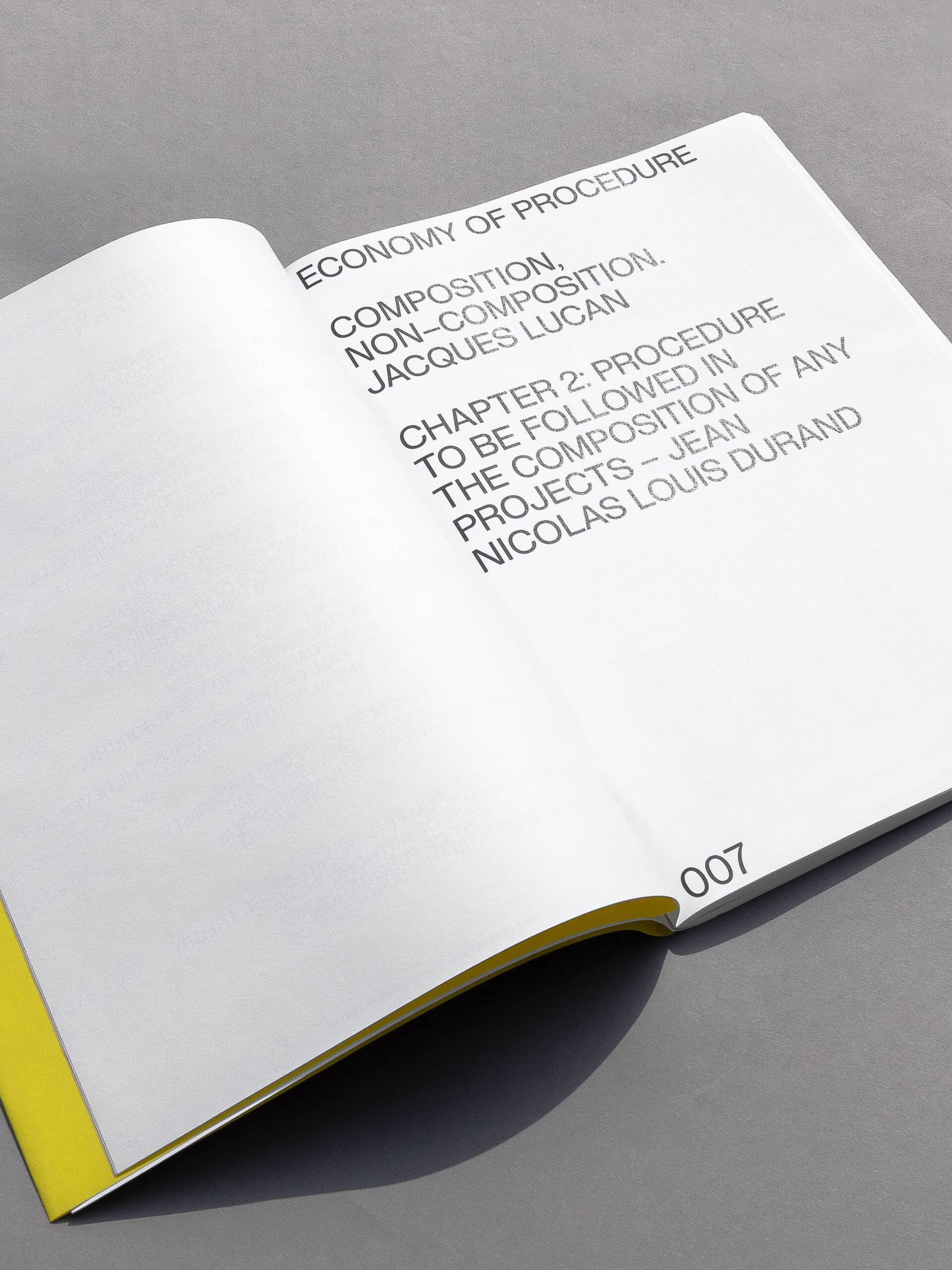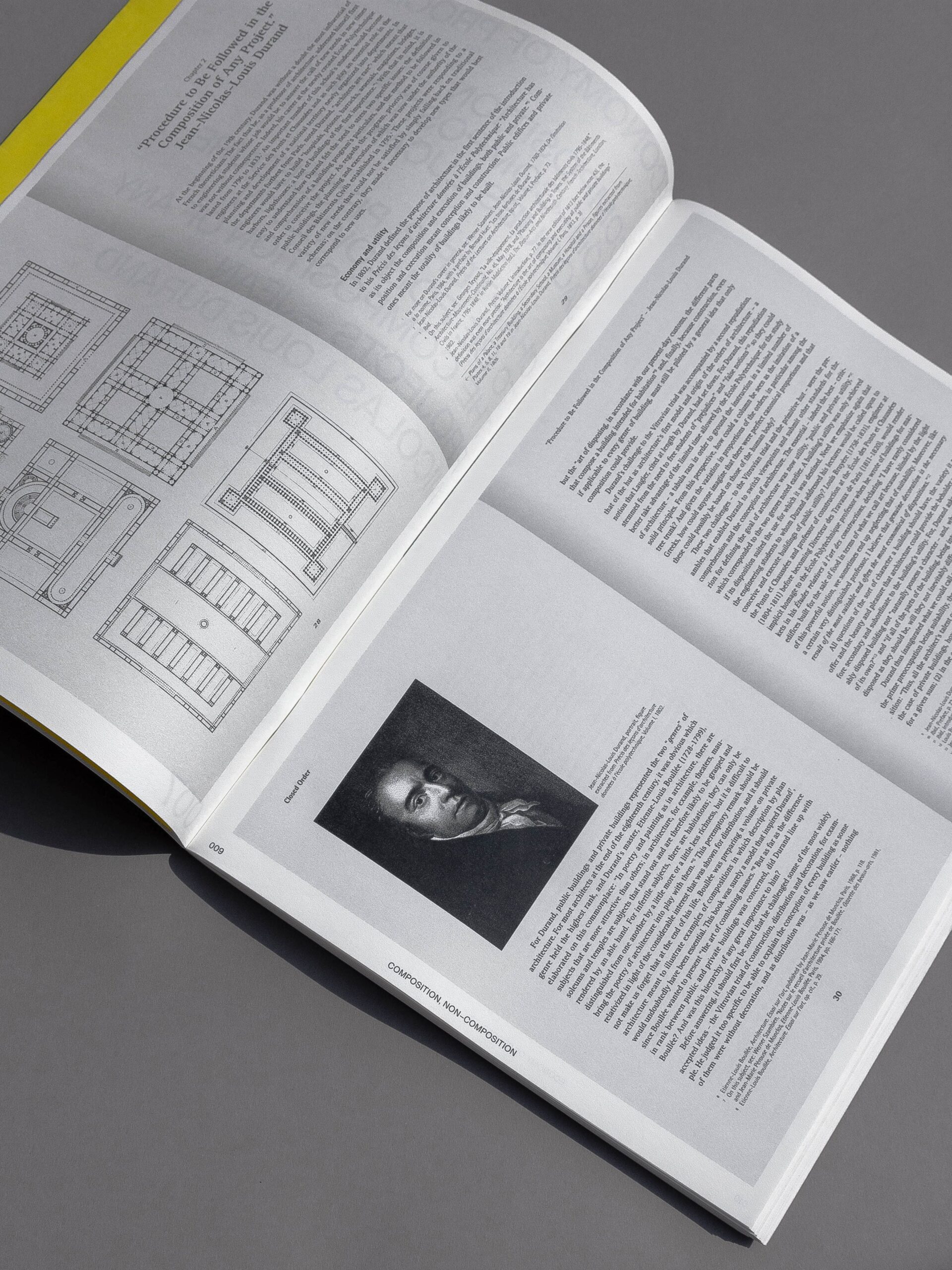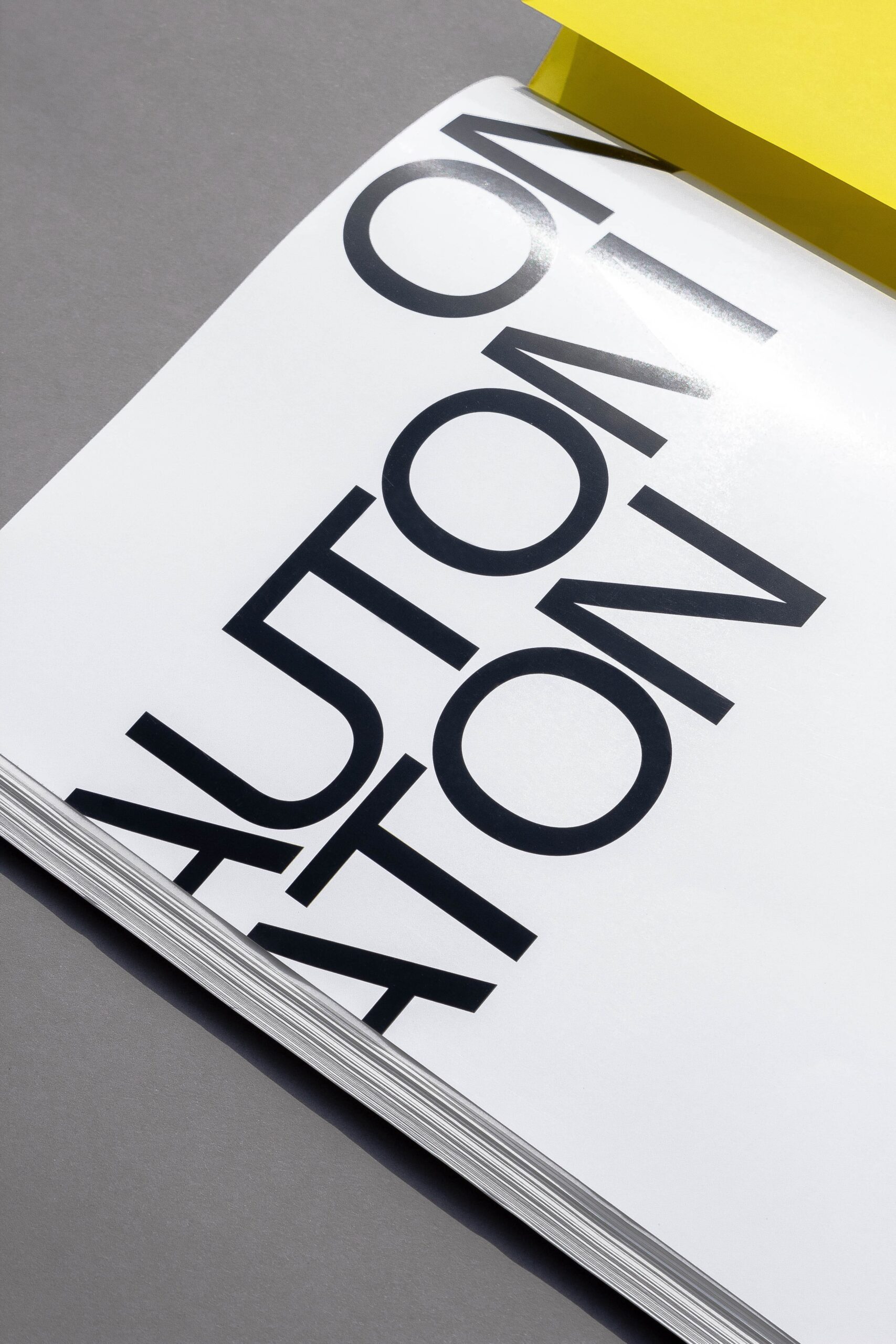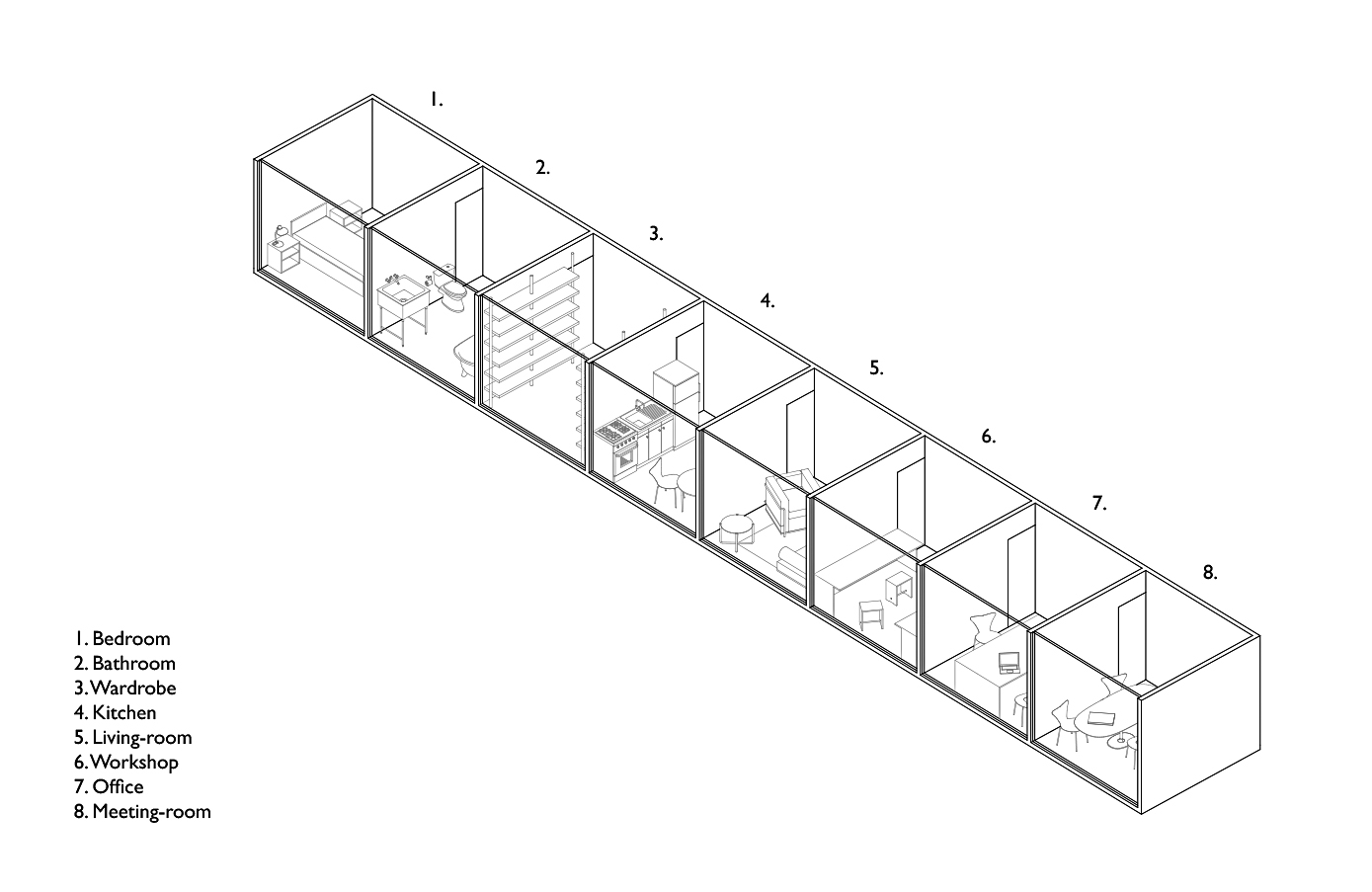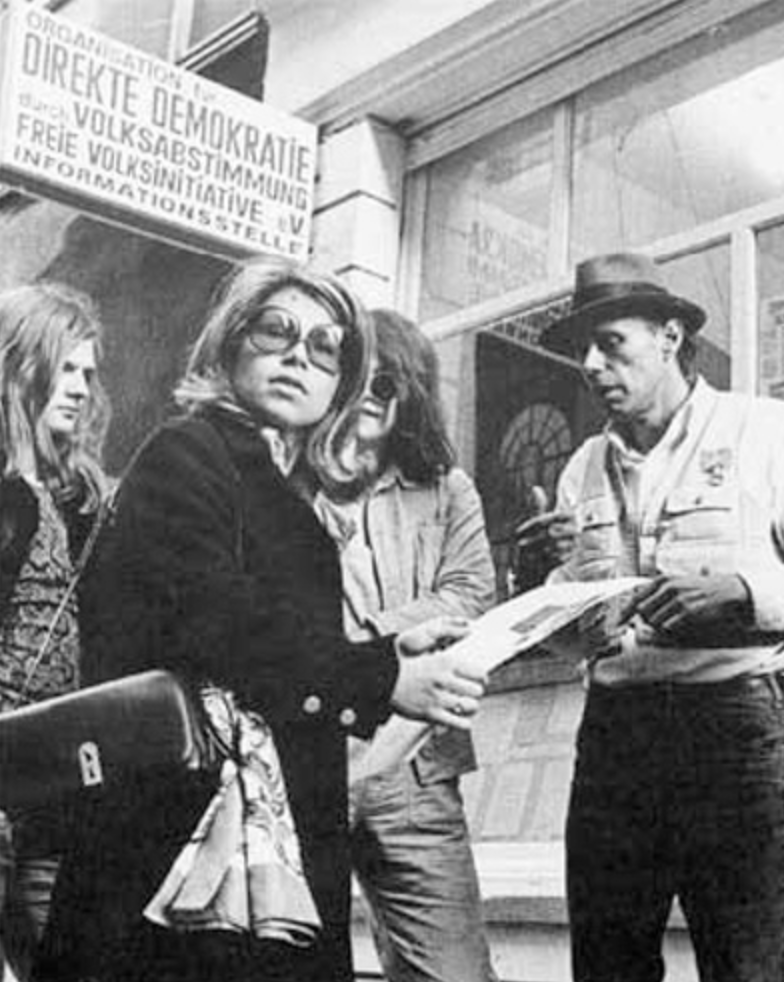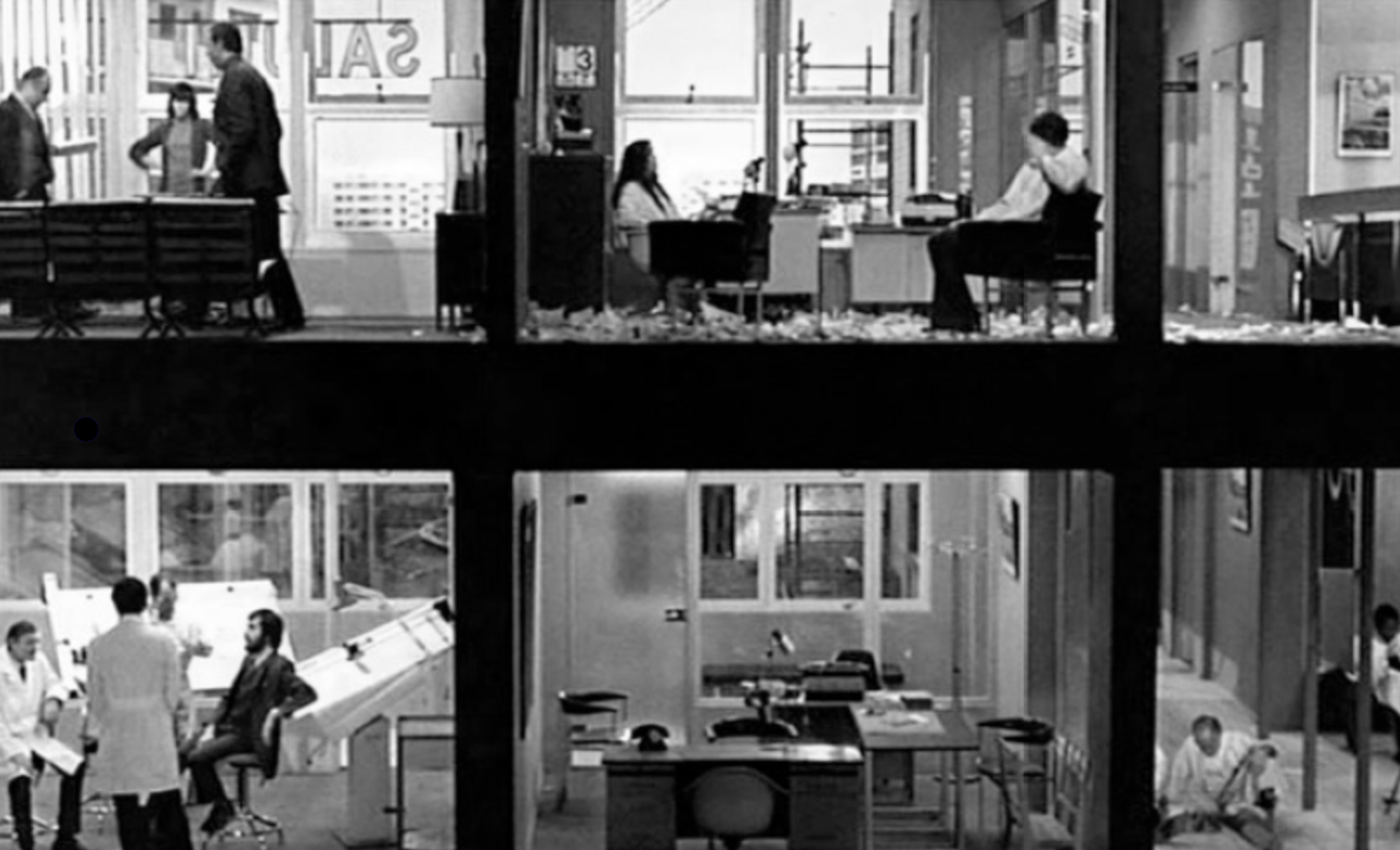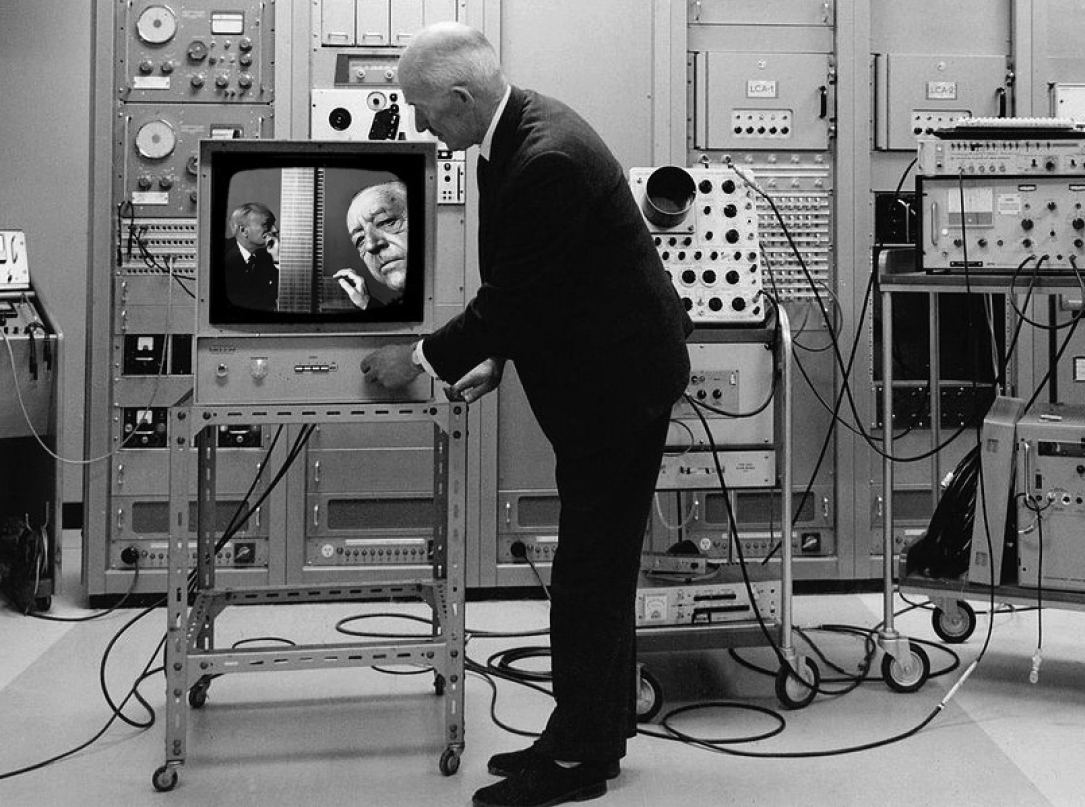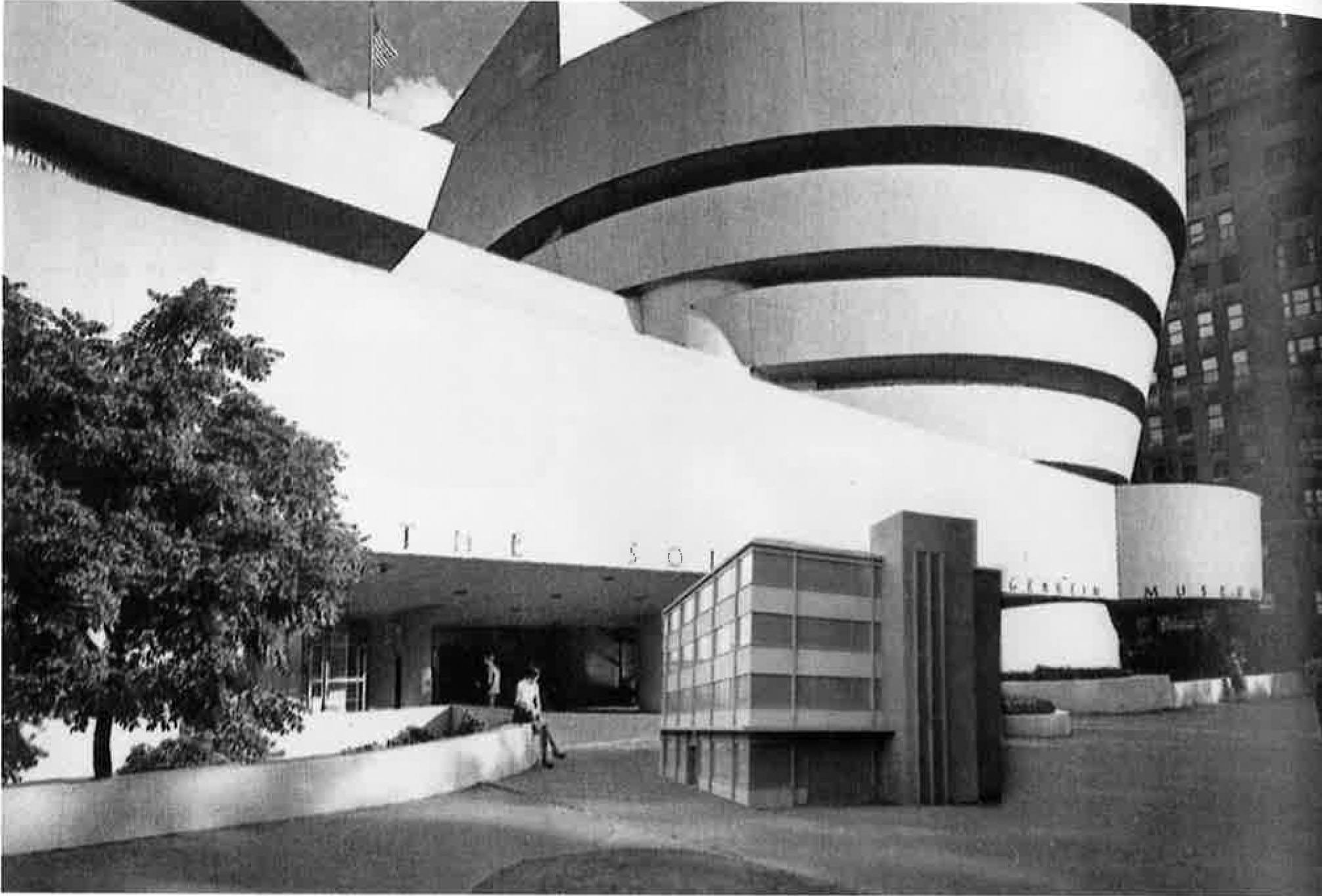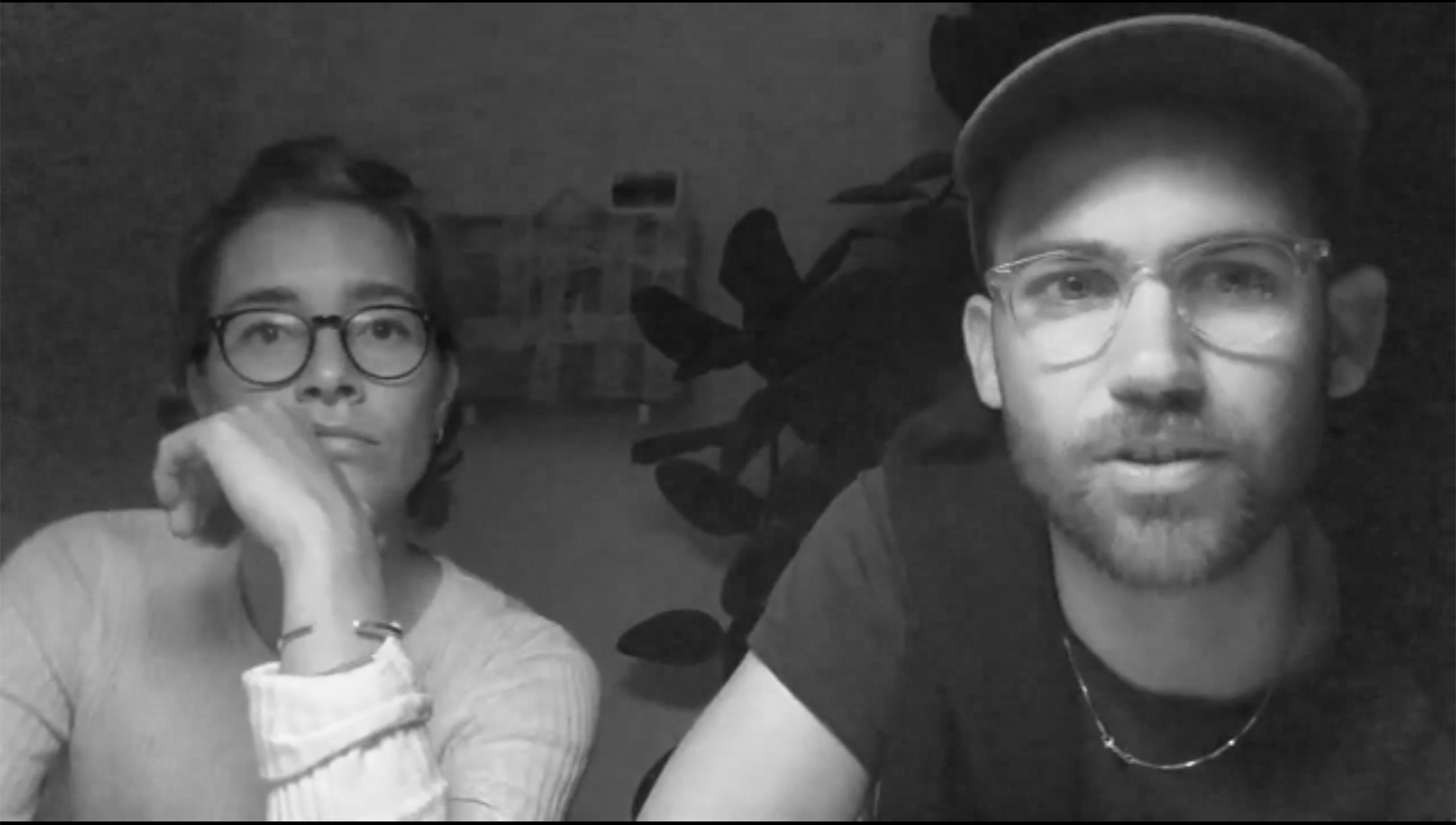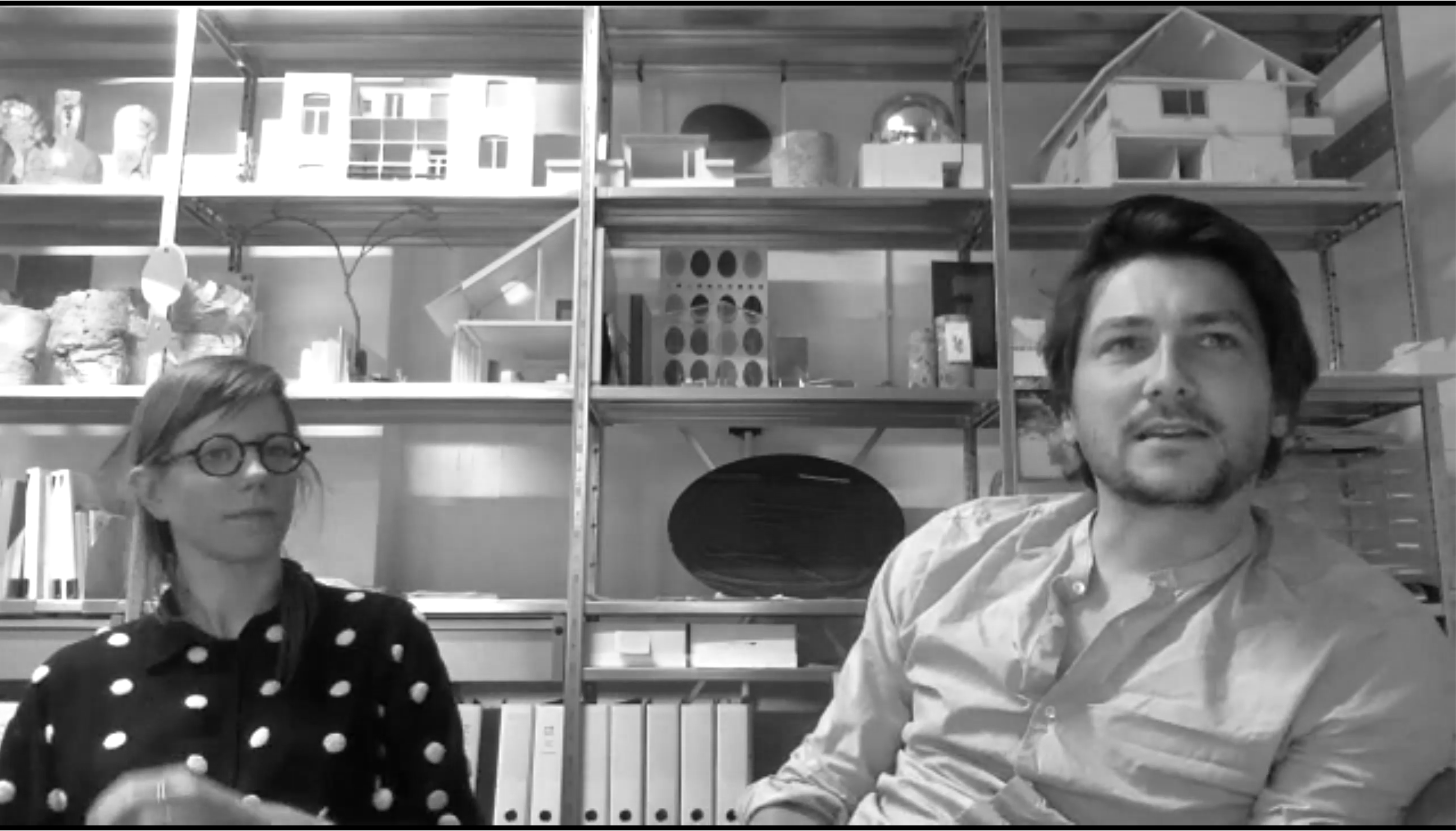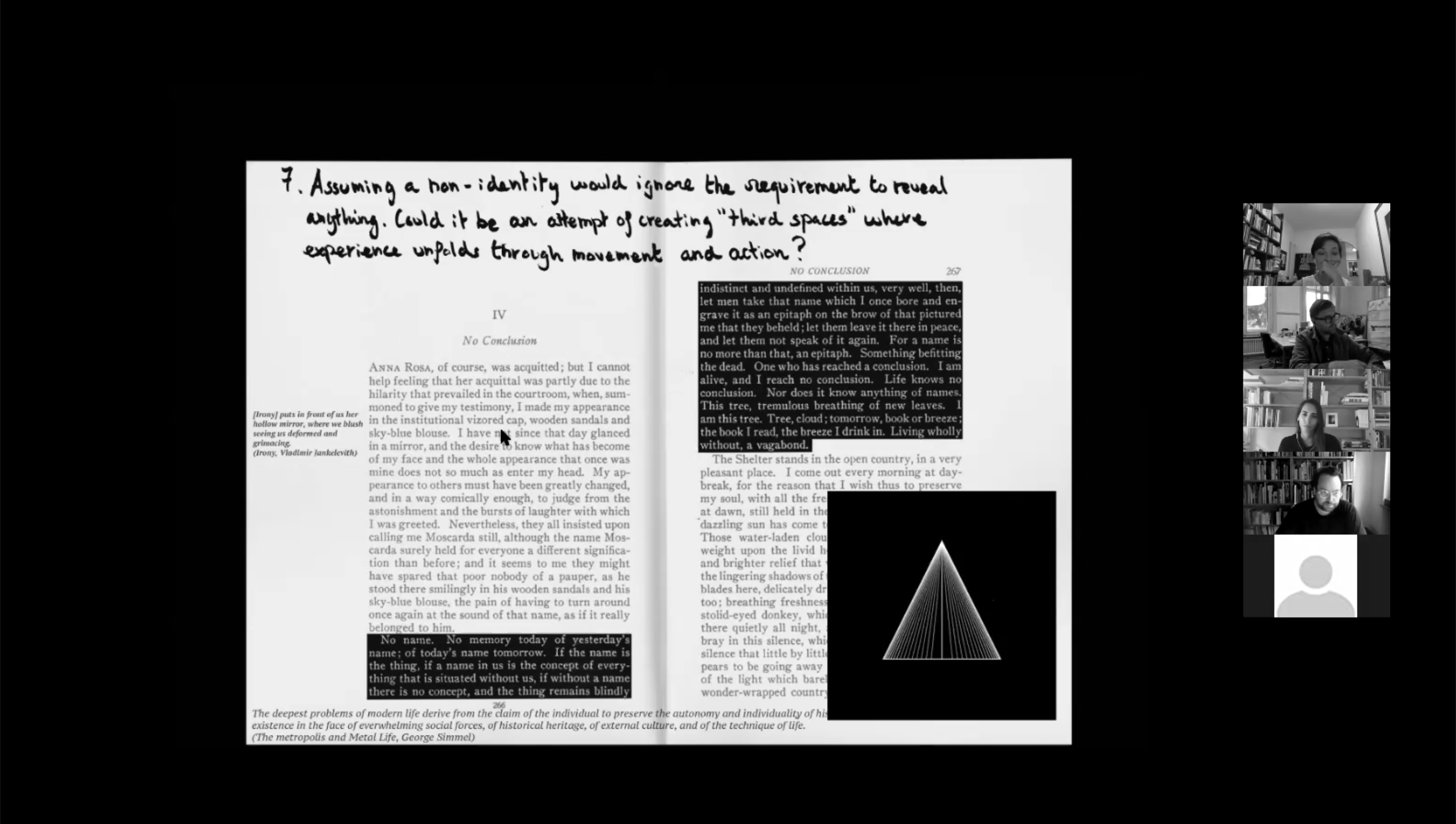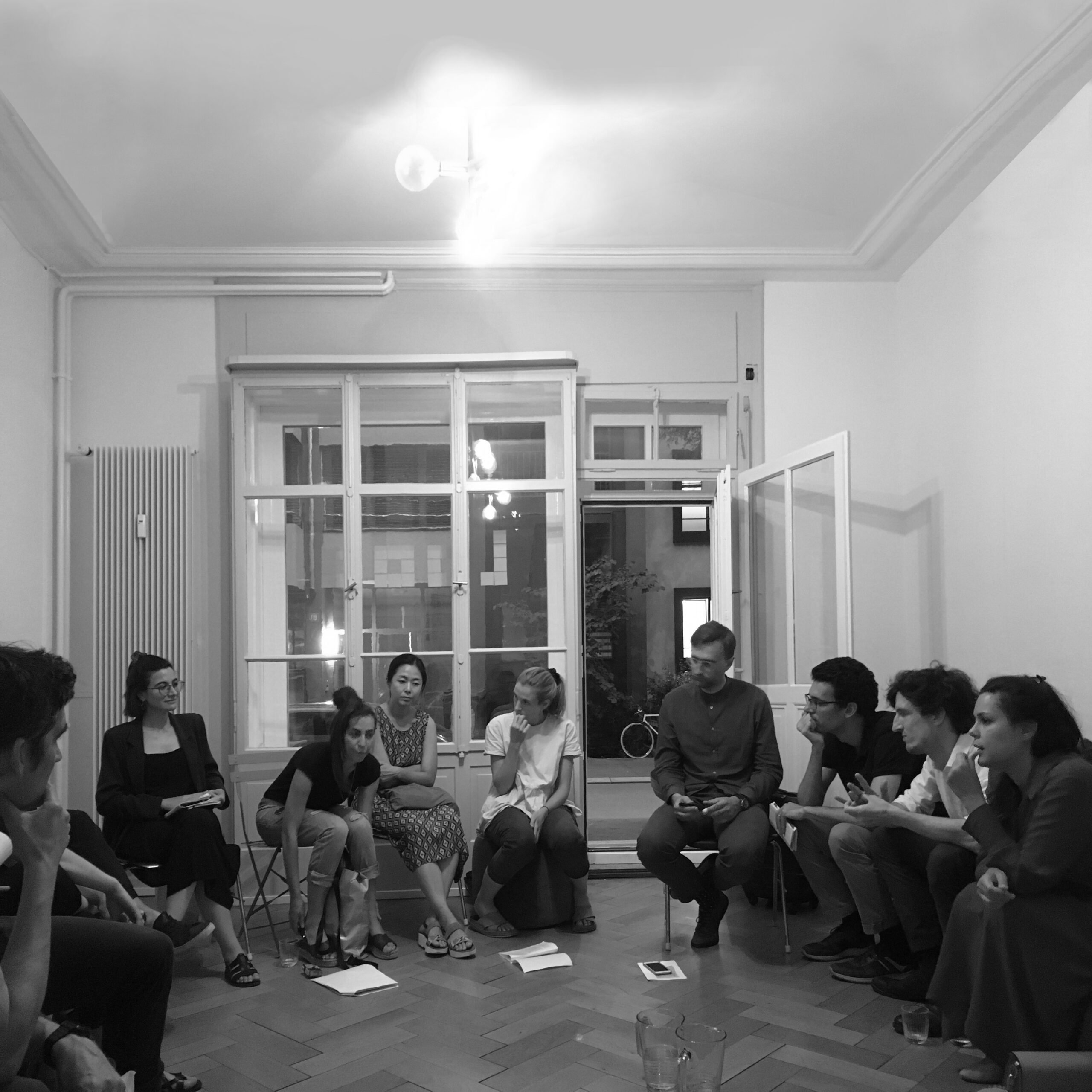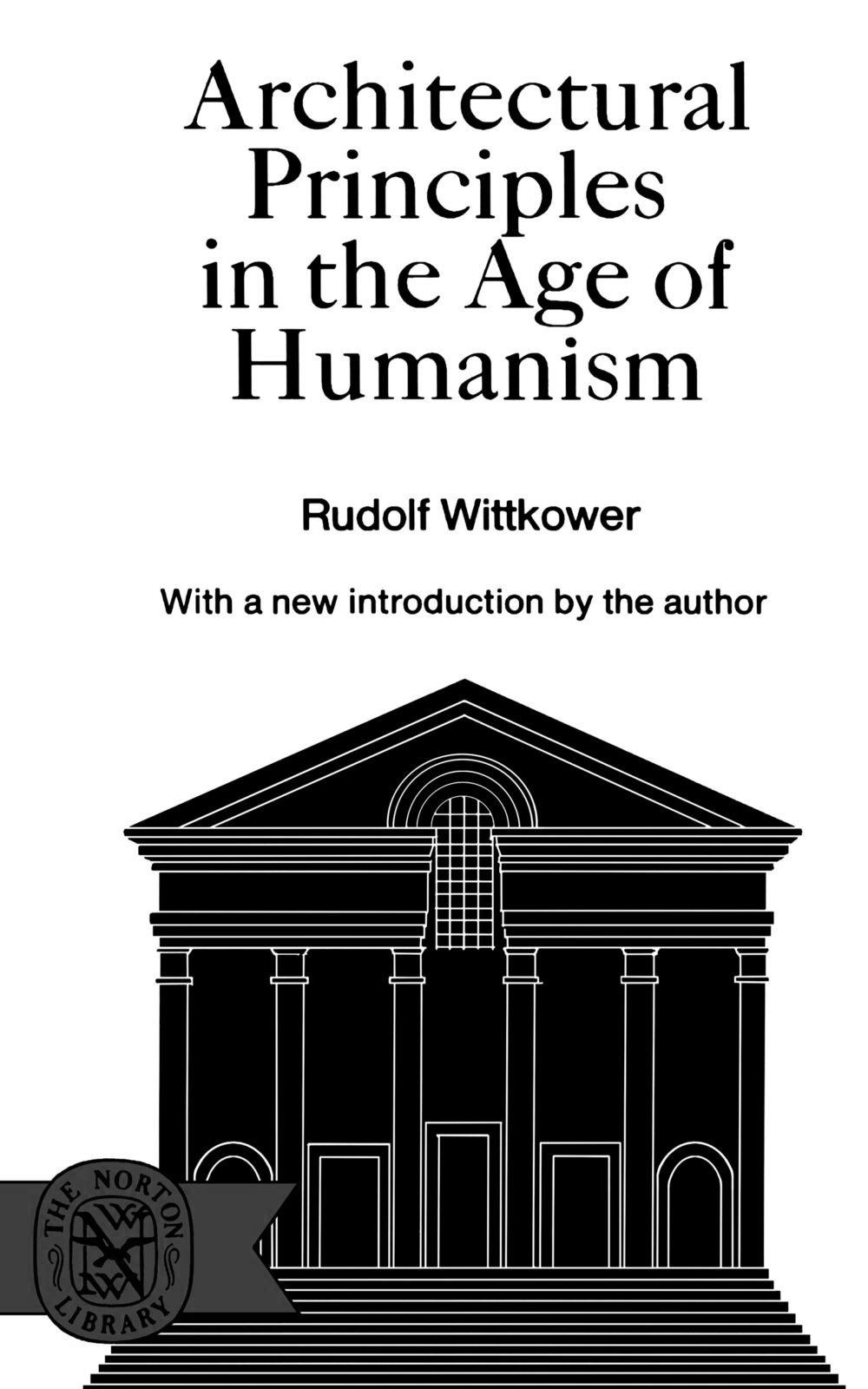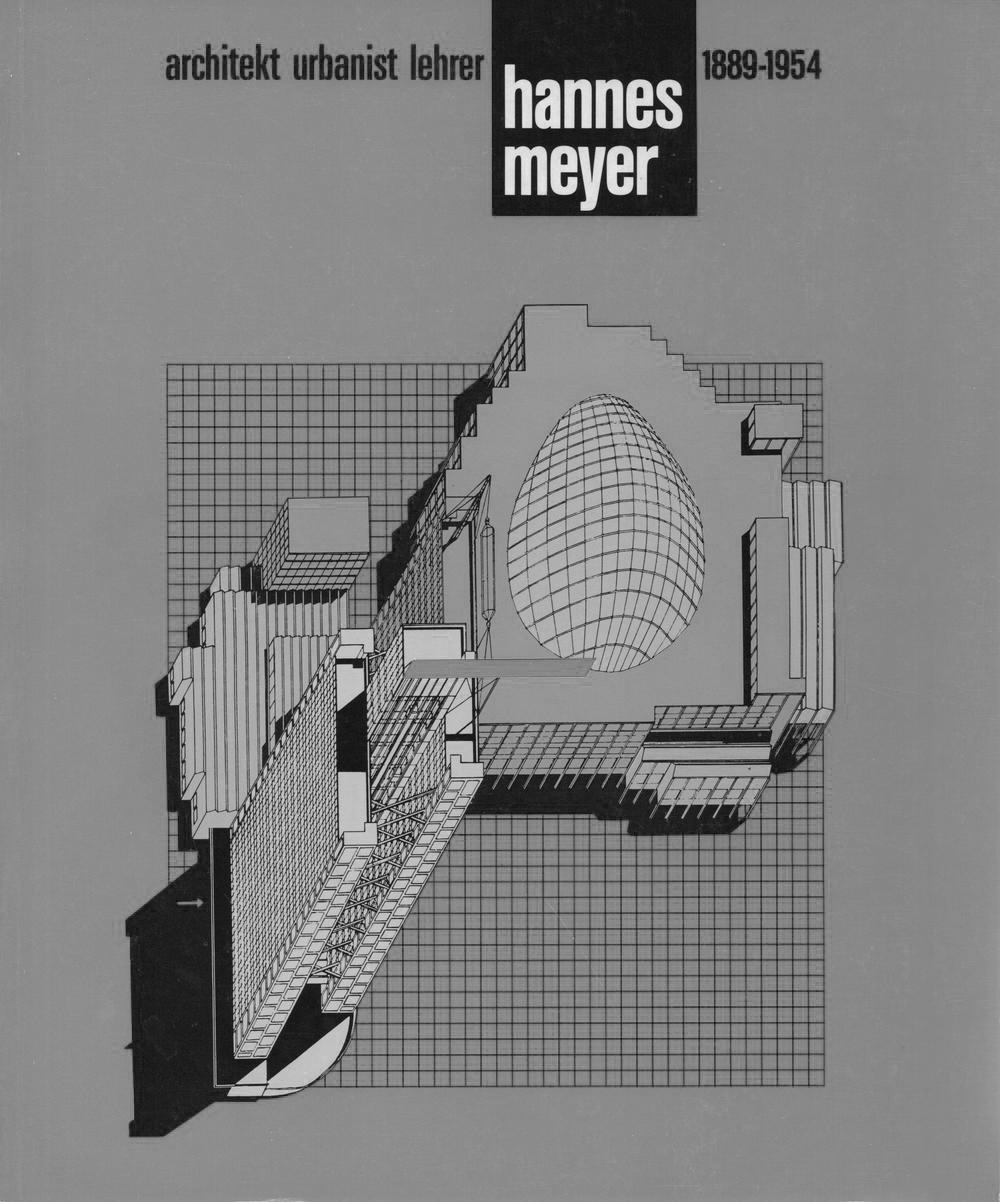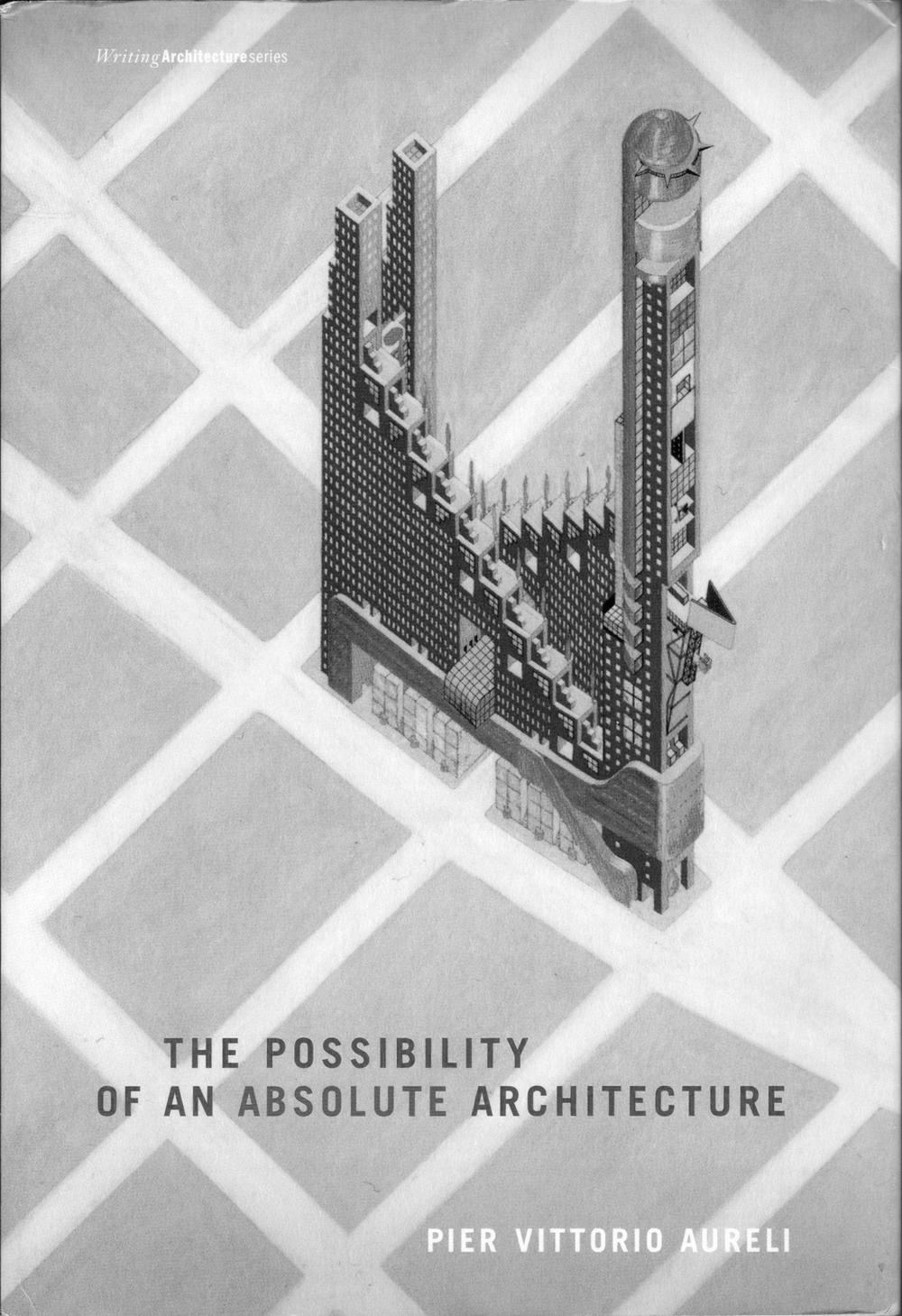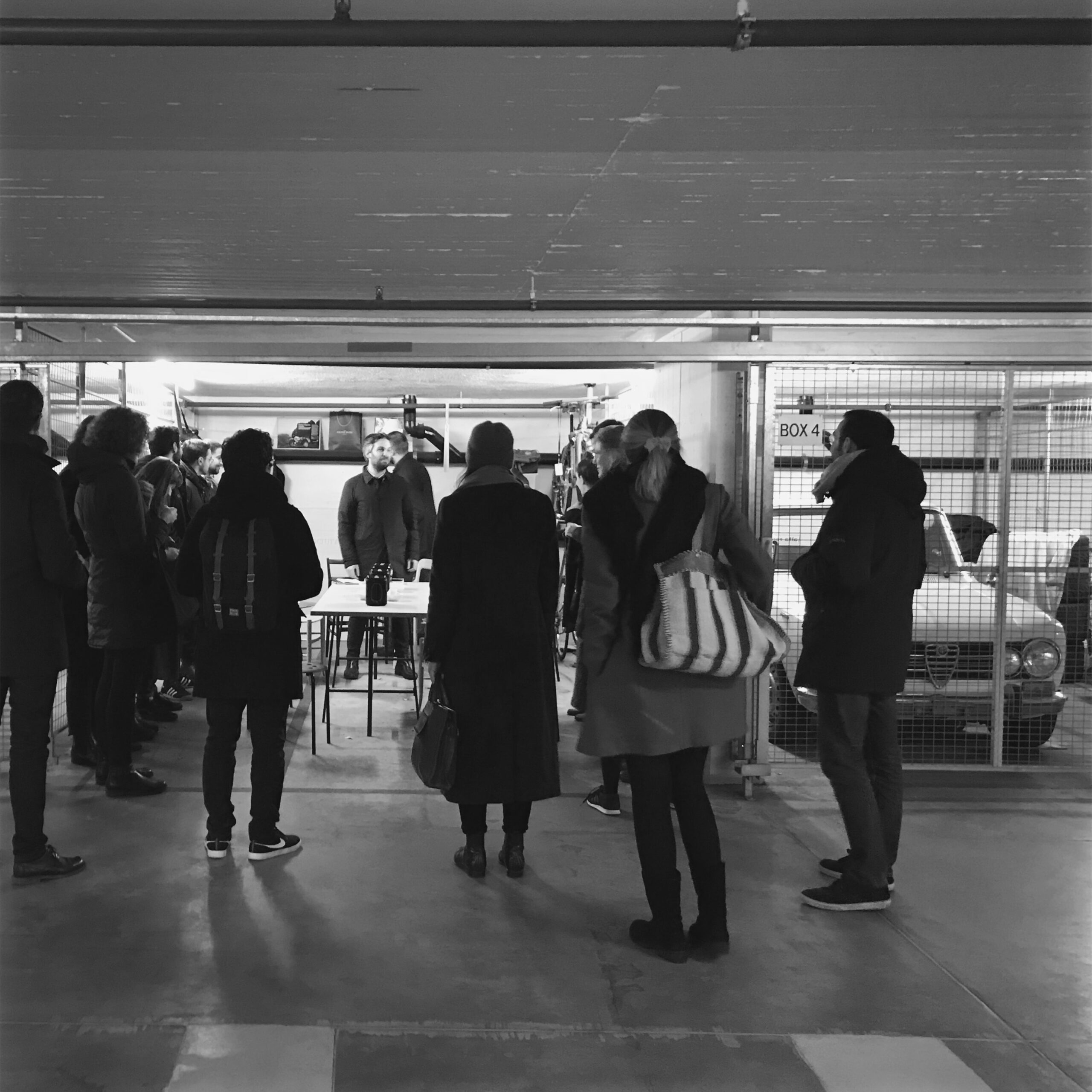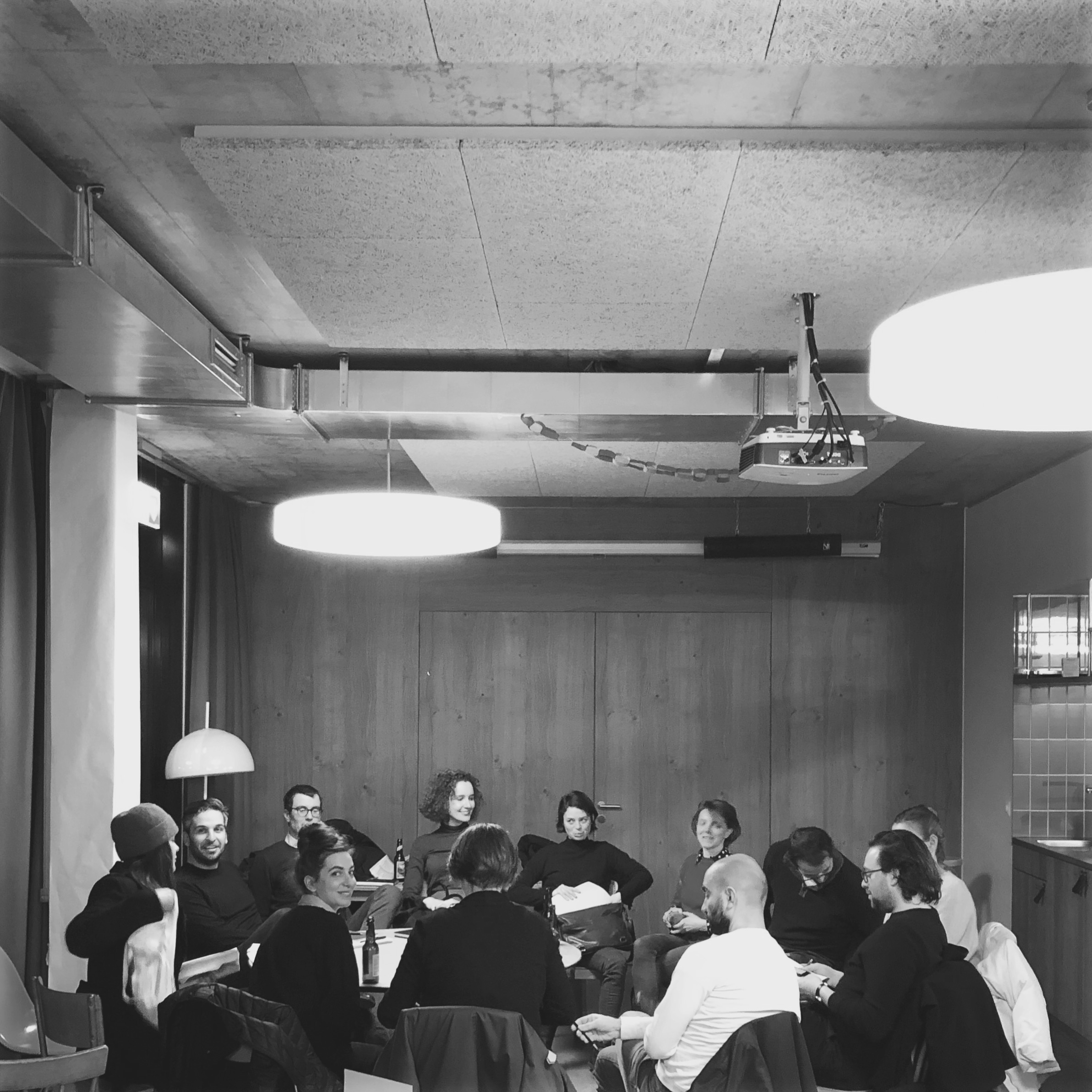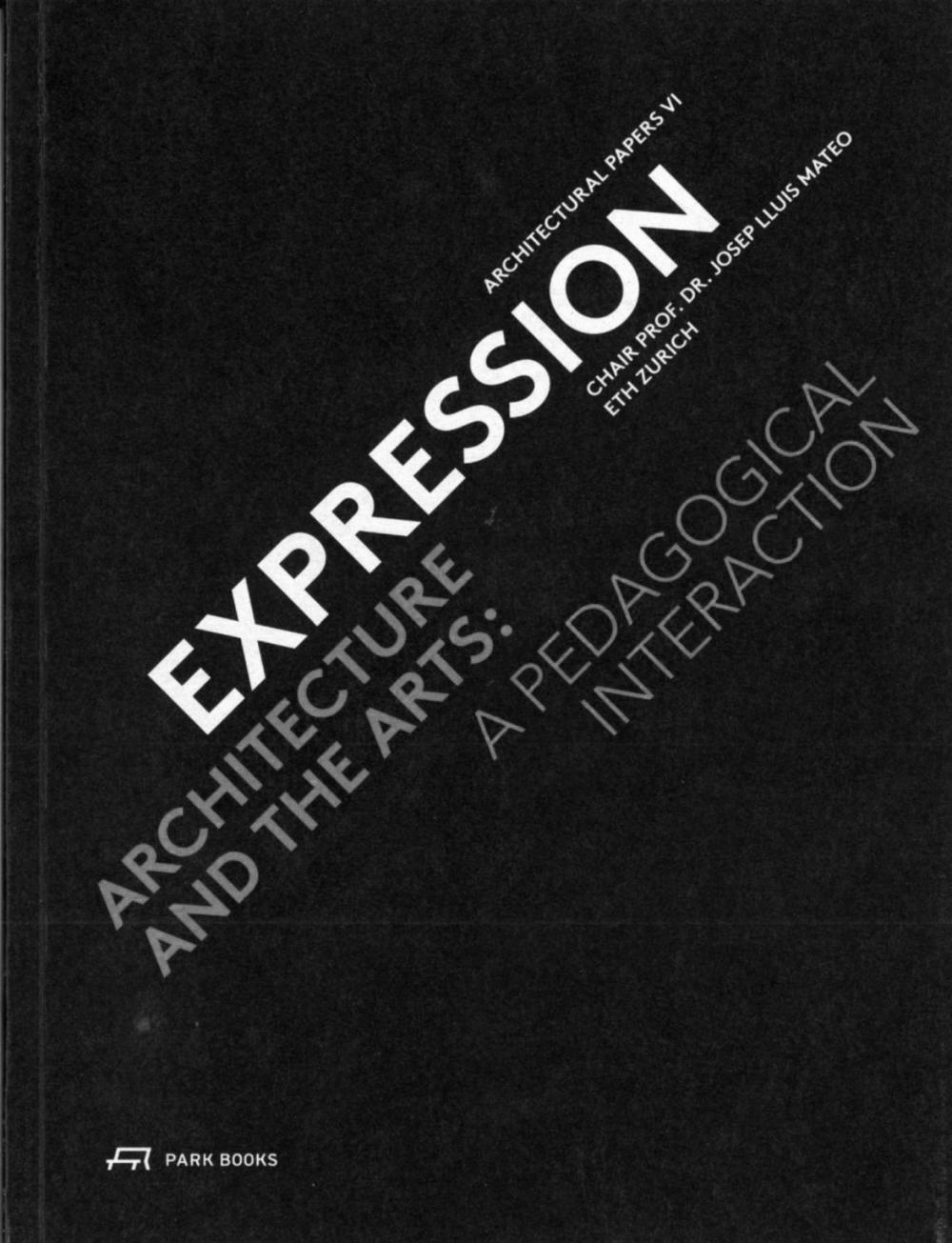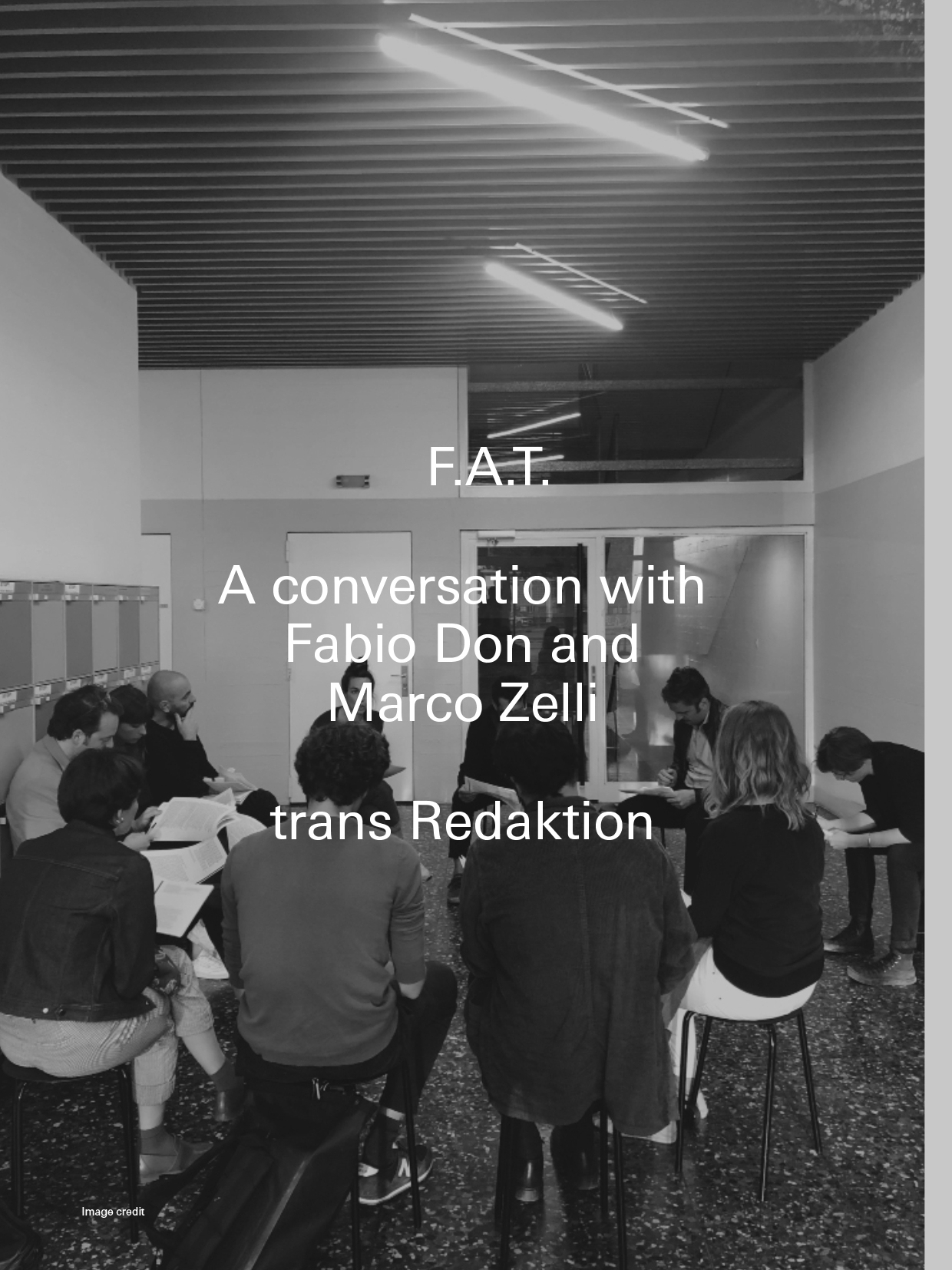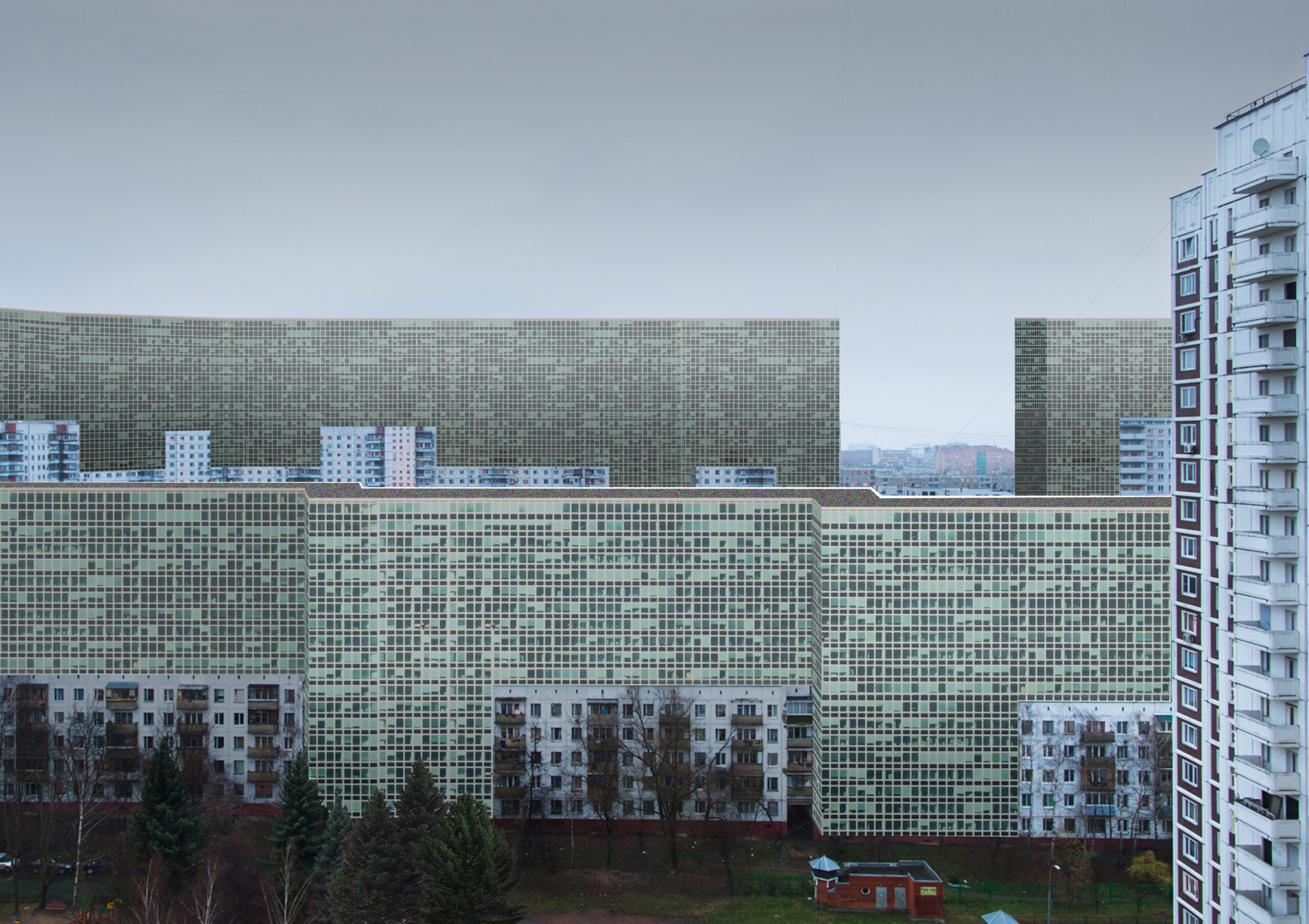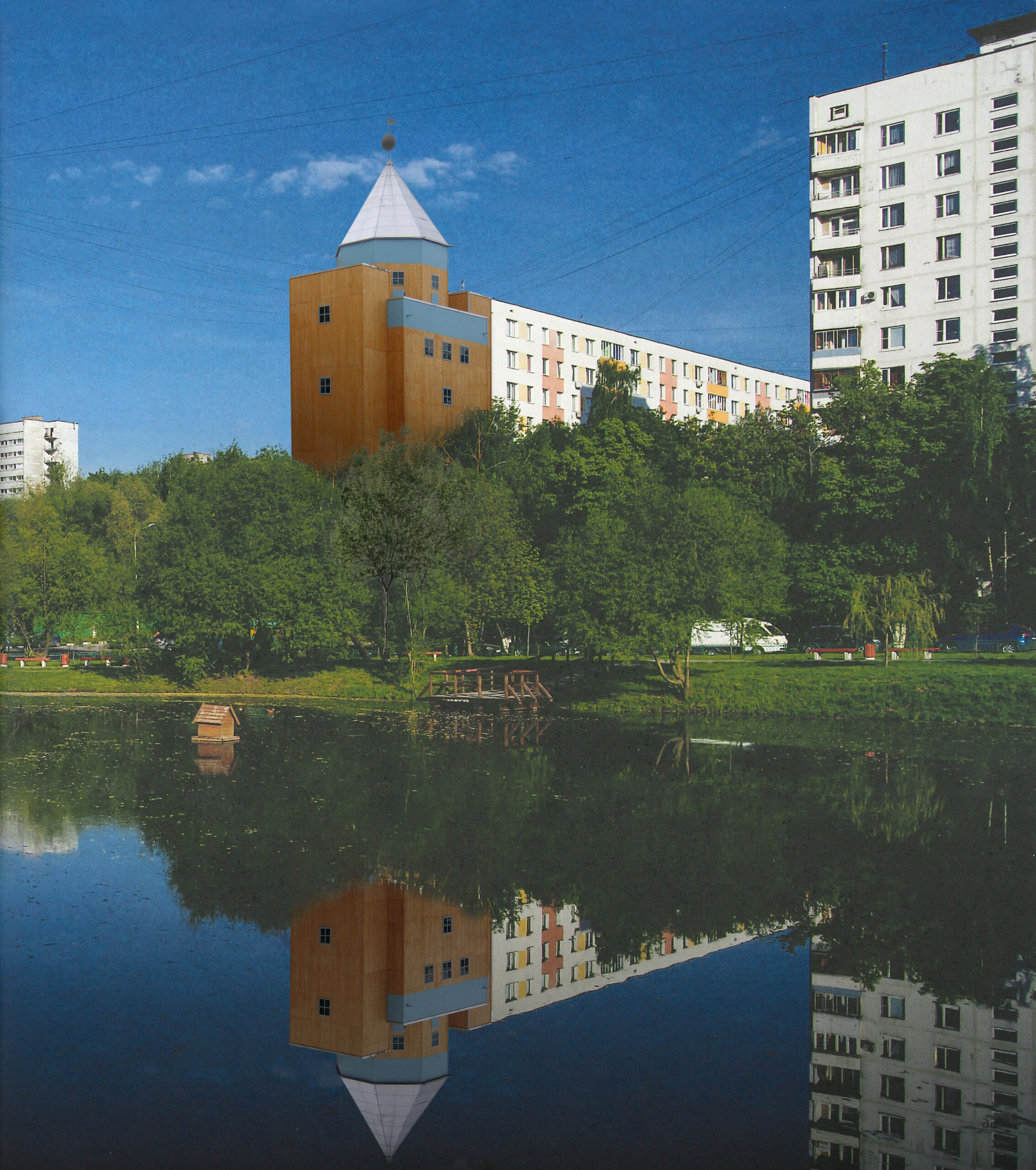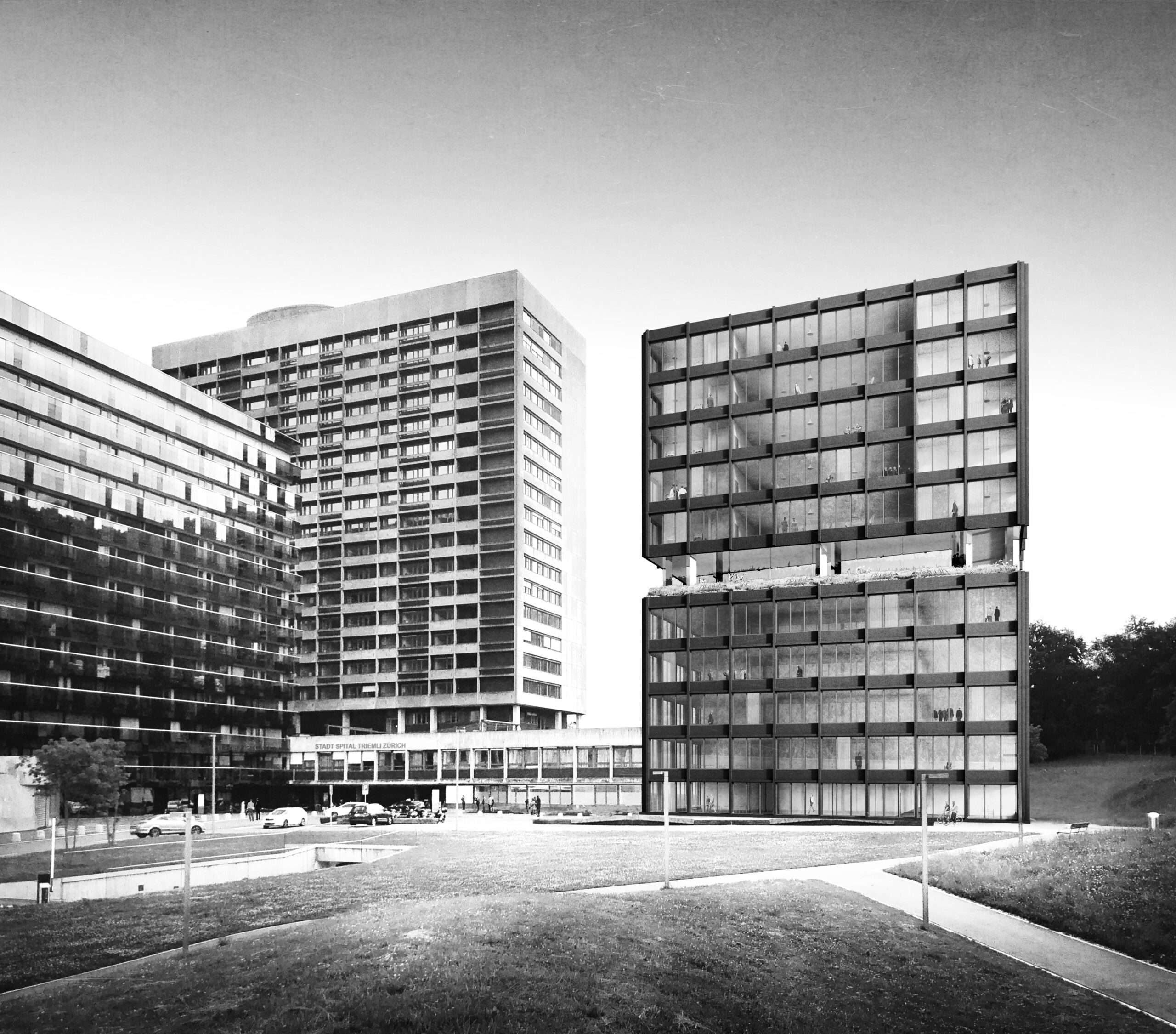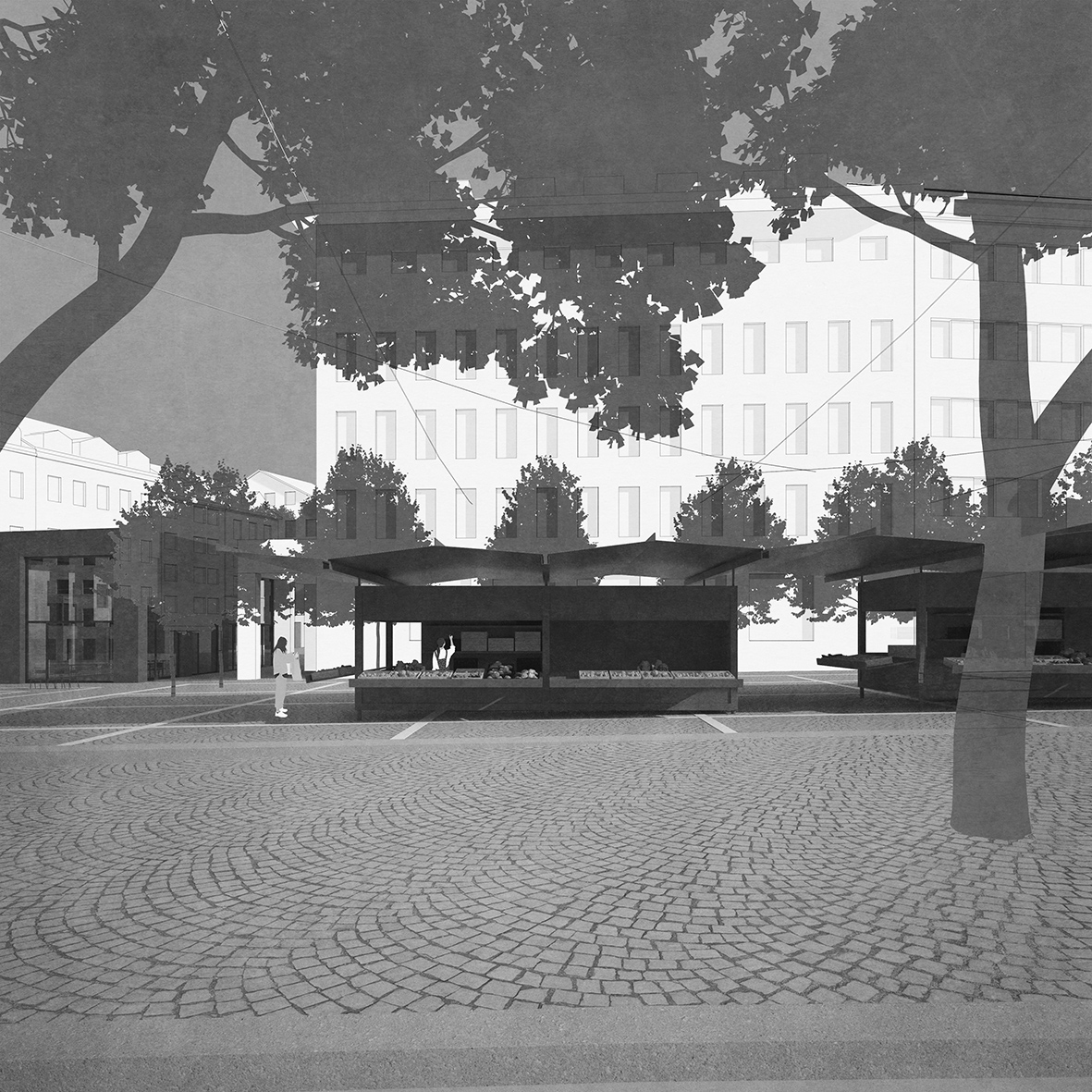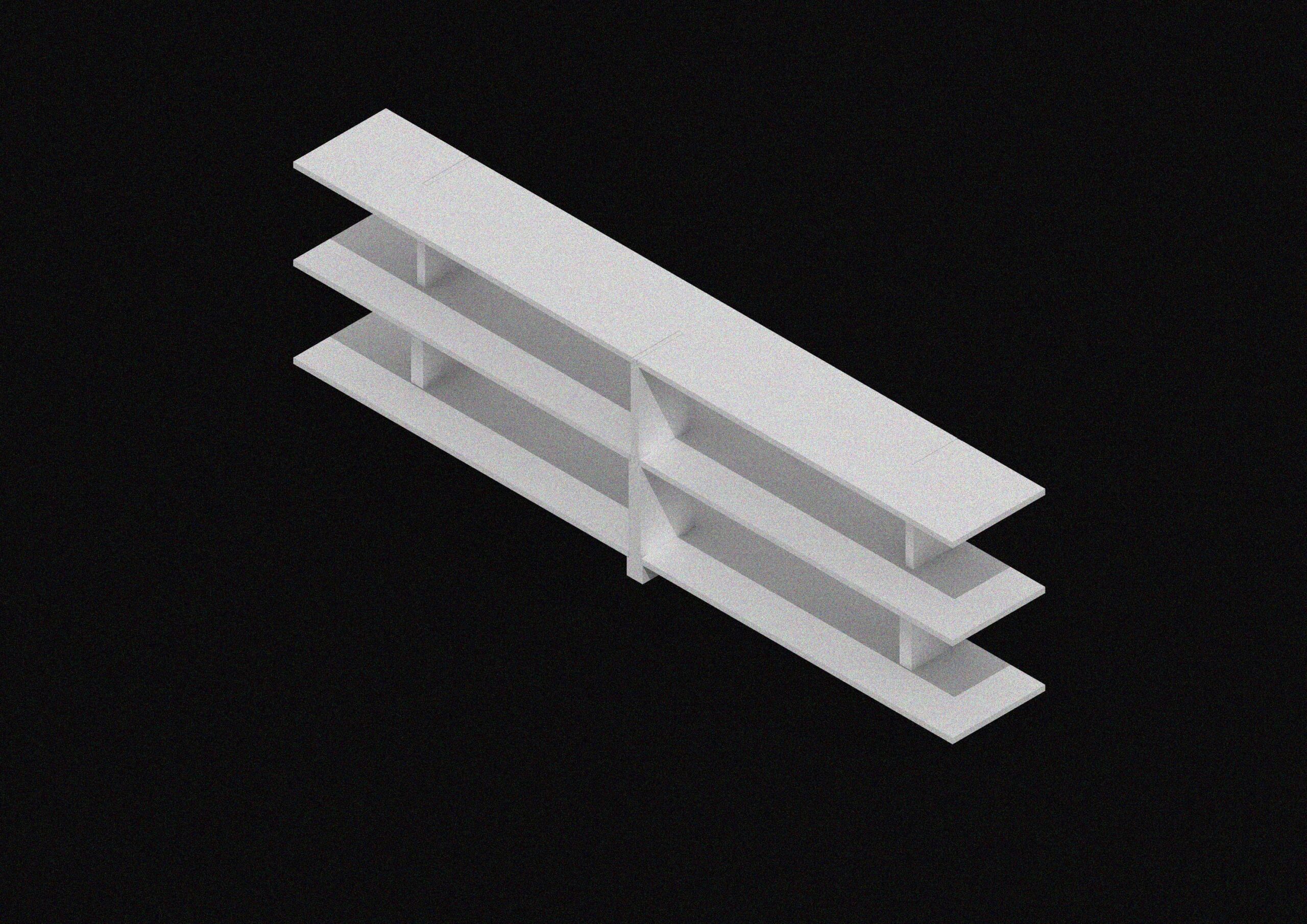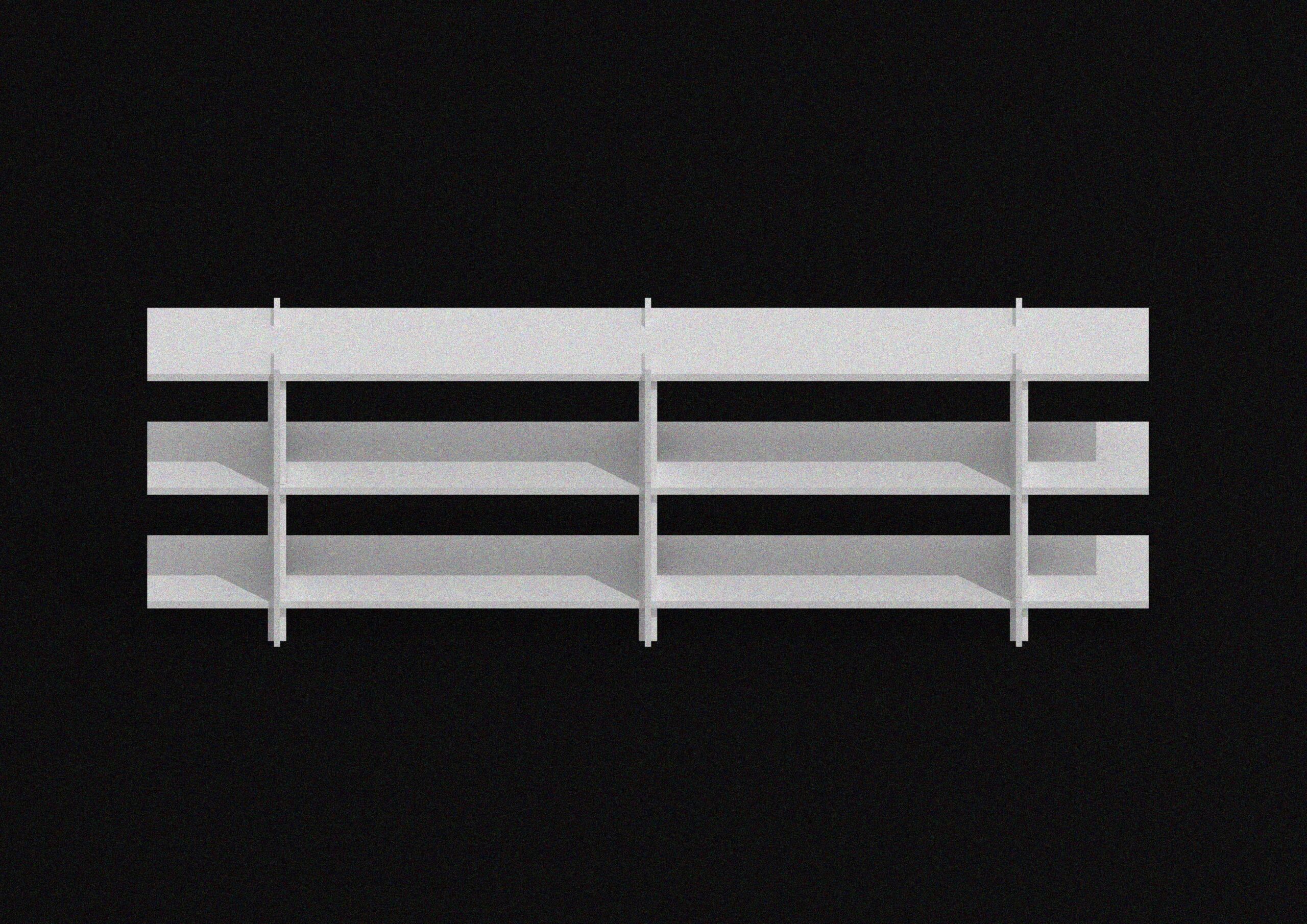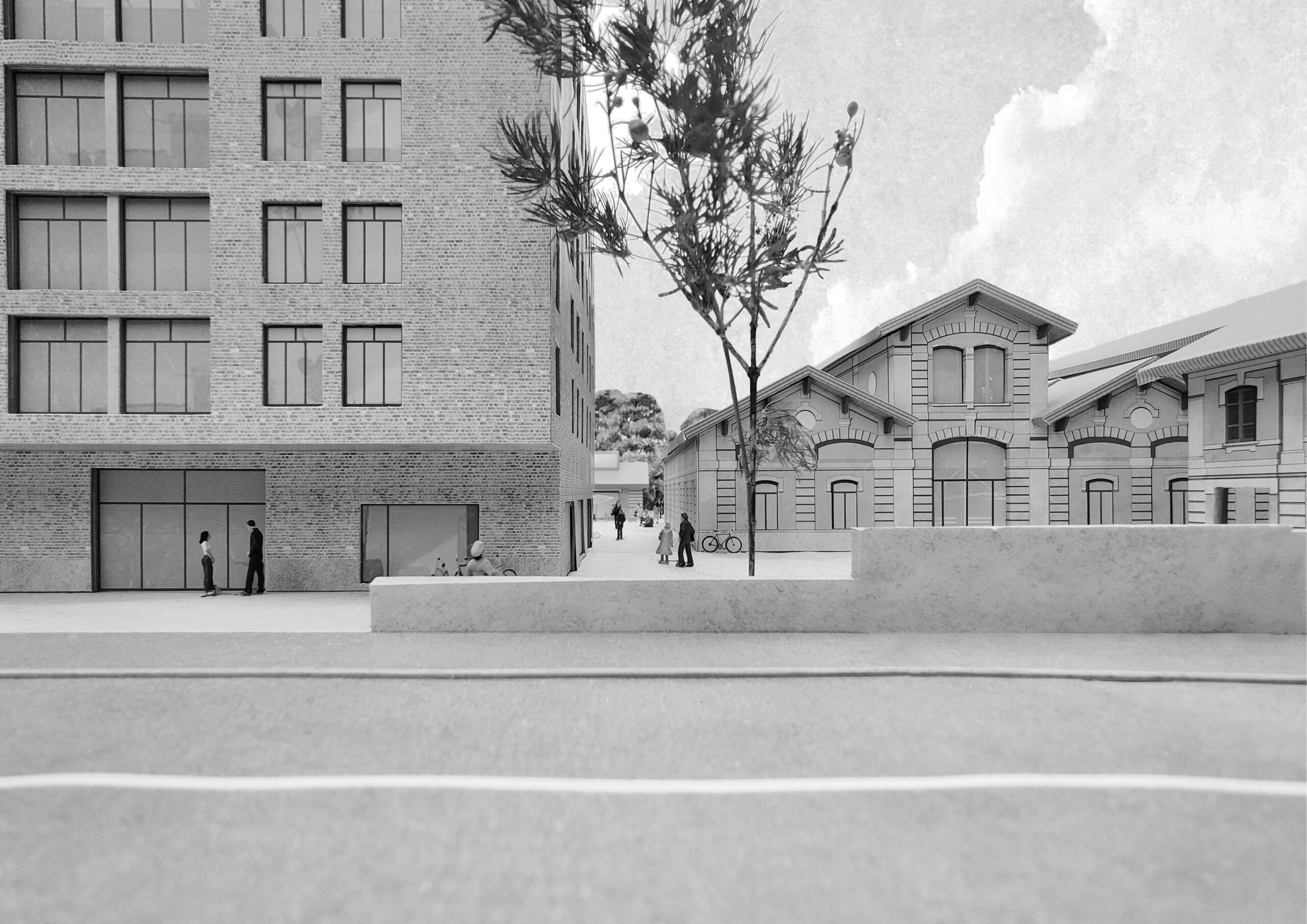Marco Zelli
Architect
Researcher
Educator
Lessingstrasse 7
Atelier 6, 8002 Zurich
E-mail
Marco Zelli is an architect, researcher, and educator based in Zurich. He graduated in 2009 from the IUAV University of Venice and at the FAUTL of Lisbon. After completing his studies, he worked for offices in Portugal (PROAP), Japan (Kengo Kuma and Associates), and Switzerland (Bearth & Deplazes, Made in), developing a wide range of projects in every design phase. In 2018 he established his own office and co-founded the Forum for Architecture Theory, F.A.T. together with Fabio Don. He writes occasionally for magazines such as Trans Magazine, ETH Zurich, and CanActions Magazine, Kiev. In 2019, he was nominated a selected creative by the Future Architecture Platform. Most recently he collaborated with SAM Swiss Architecture Museum of Basel, the Mies Van der Rohe Foundation, CANactions School, the Lisbon Triennale, Architektur Filmtage Zürich, Archfondas and organized students’ workshops at the Maat Museum and at Zentrum Architektur Zürich. Currently, he is a teaching assistant at the Chair Raum+Entwerfen, Department of Architecture, Karlsruhe Institute of Technology, KIT.
Friends: Mariabruna Fabrizi, Socks Studio/Microcities; Freek Persyn, 51N4E, Newrope ETHZ; Filip Dujardin, Bessire Winter; Scott Lloyd, TEN studio; Natalie Donat Cattin, Irini Peraki, Charlotte Truwant and Dries Rodet, Dries+Rodet; Severin Jann, Charlotte Malterre Barthes, Andreas Wirz, Pascal Hunkeler, Nuno Brandao Costa, Ines Lobo, Edgar Brito, Daniel Zamarbide, Bureau; Filipe Magalhães, FALA: Lucinda Correia, Fabrizio Ballabio, Silvia Balzan, Tibor Bielicky, Superposition; Gregoire Farquet, Giulia Scotto, Romina Grillo and Liviu Vasiu, Grillo Vasiu; Fabio Don, Jana Münstertheicher, Alexander Kolbinger.
Design: Silvia Balzan
Development: Davide Giorgetta


Research
Introduction to the Student Workshop
at MAAT Museum, Lisbon
Published in the occasion of the 5th Edition of the
Lisbon Architecture Triennale, The Poetics of Reason
03 October-02 December 2019
Curated by Éric Lapierre
In the exhibition “Economy of Means,” Éric Lapierre defines economy as a direct outcome of reason. Rationality designates architecture as a form of collective intelligence, “understandable and shareable by everyone,” as he puts it in his introduction to “The Poetics of Reason.” Simultaneously, logos, the essential driver of western culture, tends to structure phenomena according to the modality of automatism. An obsessive search for order appears throughout western architectural history under different parameters: geometry, proportions, prescriptions, procedure, active form… all of them expressing an attempt to reduce the number of potential choices implied in the very act of design. The latter seems to oscillate between a wish to make something that depends on human decisions and a desire to make something “free” from decisions. On these grounds, Forum for Architecture Theory proposes to analyze the narration of Lapierre’s exhibition using, as its lens, the word “automaton” — a figure of thought characterized by constructive ambiguity. While the English meaning of the word refers to “a self-operating machine designed to automatically conduct a predetermined sequence of operations”, i.e. full control, the Greek-Aristotelian acceptation of the word means “Fate. A power that causes and controls all events and gives no chances to change or control the way things will happen”, i.e. no control. The dialectic between these two poles, embedded in Western culture’s main driver, is the topic that our contribution aims to stress. This selection of texts is organized as pairs of opposites, adhering to the categories defined by the curator of “Economy of Means” (economy of the procedure, the economy of materials, economy of voids, economy of measures, economy of repetition) from the specific point of view described above. It starts with a confrontation between Jean Louis Durand and Rem Koolhaas, aiming to reckon the increasing abstraction of the design act, ranging from compositional to programmatic. It closes with a text by Andrea Branzi, which does not define the “metropolis of information” as “the capital of technology” but, rather, as “the promised land…of the humane”, and a text by Mario Carpo describing the end of the authorial paradigm in favour of the “many hands” model. In the midst of a journey through the adventures of reason.
Read more
Read less
Proposal for the Architecture Biennale of São Paulo
F.A.T. Forum for Architecture Theory
2019
The project aims to display a daily life “section” of our profession, employing a performative approach.
The idea consists of enacting the topic instead of just representing it.
A pavilion, consisting of a didactic sequence of functional space, will be installed on the roof of the CCSP building (or inside): bedroom, bathroom, wardrobe, kitchen, living-room, atelier, workshop, meeting room. On one side, a generous glazing wall allows the public to participate in the inhabitants’ real-time activities. We will be living and working there as architects for the biennale’s whole length, offering a free consultancy in the morning to all the interested visitors and operating according to regular schedules in the afternoon. Talks and discussions will be integrating the pavilion program weekly. Daily life’s ritual aspect will be clearly expressed from the very layout of the building and its use. Models, drawing, meeting, and physiological functions will unfold through the tape window, realizing the voyeuristic and cinematographical potential of a relatively common device.
Read more
Read less
“The presence of others who see what we see and hear what we hear assures us of the reality of the world and ourselves.”
Hannah Arendt, “The Human Condition”, 1958
Despite the etymology of the word (from Latin res: «matter, thing, good»), ‹reality› is not only about physical substance as opposed to the immaterial and the virtual. By adopting the Platonic construction of ‹reality›, medieval Scholasticism introduced a radical shift in the original use of the term and defined reality as the set of our collectively shared notions. If the word “reality” related to TV shows suggests a third meaning, namely the lack of a fictional plot, it is worth noticing how these kinds of shows produce reality by spreading shared values. Cooking talent shows represent a particularly brilliant example of this dynamic. The more we watch them, the more a certain form of “creative cooking” becomes part of our everyday social life; we buy recipe books, we exchange views about food preparation, famous chefs, and restaurants. Thanks to TV shows, cooking became a noble and even prestigious activity. The purists of the discipline might consider such shows as a form of prostitution, but they are spreading a sort of “cooking culture,” which is now part of our collective conscience. Cooking talent shows transformed necessary labor into a transcending activity on a wide scale. As Cedric Price noticed, both architecture and cooking contain the projection of a desire in the future; they both produce immediate feedback on the ‹user› and, more importantly, both are essential to our survival. However, architecture suffers from a lack of a shared consciousness about its importance and potential; it lacks a sense of ‹belonging› to the world of shared ideas we call reality. Many architectural practice aspects are unknown or largely misunderstood by the majority of the population that consider architects’ behaviour snobbish and their language incomprehensible. Architects, on the other hand, blame the ignorance of their clients for their failures and frustration, whilst enjoying the romantic feeling of elitist isolation. We believe in the necessity of establishing a dialogue between these two seemingly irreconcilable positions and of replacing the architects’ complaining
attitude with a more proactive engagement. What if we applied the ‹reality show effect› to architecture?
Read more
Read less
Fake Advertising for Trans Magazine ETHZ
with Giulia Scotto
2018
The Platform for Architecture and Media (P.A.M.), in collaboration with TV station.plus, is organizing an architectural reality show. By documenting the lives of four teams of young architects during a two-month architectural competition, the show will establish a dialogue between architects and non-architects, providing an unprecedented moment of reciprocal education.
CALL
We are looking for 16 ambitious and talented young architects to join the show and bring architecture to the stage. We offer the unique opportunity to participate in a restricted competition and work for two months in strict contact with internationally renowned architects.
SHOW
During the show, you will be living and working in a stimulating environment with high visibility. The ‘Platform for Architecture and Media’ will take care of your living costs.
COMPETITION
The competition entries will be judged by the audience and by a jury of highly qualified professionals. The P.A.M. will provide the winning team with all the necessary infrastructures to build its project.
APPLICATION The program is open to worldwide architects born after January 1, 1983. Participation is free of charge. Please send your curriculum, portfolio, and motivation letter by Friday, November 30, 2018, at 11:59 p.m. CET to: platformarchitecturemedia@pam.com PLATFORM FOR ARCHITECTURE AND MEDIA The Platform for Architecture and Media researches the implications of new communication technologies on architecture and design. Established in Zurich in 2017, the Platform promotes experimental workshops and participatory events in collaboration with European foundations, universities, and museums. For more information, visit our website: www.platformarchitecturemedia.com
Read more
Read less
F.A.T.
Forum for Architecture Theory
Seminar Sessions from n. 21 to 23, 2020
Irony appears in architecture every time a teleology finds its limit. This figure of speech can be declined in many ways, but it always refers to opposites’ simultaneous existence in the same frame of observation.
The critical suspension of the principium individuationis becomes then an instrument for a more complex understanding of reality as a magmatic substance “that contains all the contradictions”*. Irony is ultimately a conjunctive “and” hi-jacking the base of western thinking without reaching its destruction. If we stand on the good old Aristotelic principle like “a man sits in a little rowboat..amidst the furious torments”**, the category of Irony offers us a vertiginous glance on the sea itself. Irony implies a recollection of the existing materials of a particular historical moment and their orientation in the form of a question. The famous motto “quid tum?” appearing in the Alberti’s medal, literally “what then?”, perfectly synthesizes the attitude of “disenchantment together with hope” *** that occurs while looking to the chaotic repertoire of history. In this sense, Irony is to be considered a highly operative category. Irony is not just about replacing lack of content with unsettling formal manipulation -like part of the architectonical production seems to suggest. Its flirt with wonder is a strategy to convey deadly serious contents in a light and fresh way. Irony is ultimately a transcending form. Recent architectural production and discourse vigorously re-embraced the tool of Irony. But what is the subject of Irony’s critic? Which are the contents at stake? Is there any reiteration in Irony’s manifestations? The Forum for Architecture Theory is taking the chance to analyze this category to track its evolution, infer its trajectory, and understand its fundamental role in the project’s making.
Read more
Read less
F.A.T.
Forum for Architecture Theory
Seminar Sessions from n.7 to 21, 2018/19
According to its etymology, the word ‘revolution’ holds an intriguing enigma: it can be understood as a radical change in the status quo or as a 360° journey— a circular movement that brings something back to its original position.
Even its prefix ‘re-’covers both the notions of ‘against’ and ‘again.’ Depending on the extent of the historical framework placed on it, revolution either encompasses the vital coexistence of dynamism and violence or the reiteration of the pre-existing, embodied in the idea of circular motion.
Much in this vein, the choice of topic represents both a departure from our last seminar, “On Permanence,” while ensuring a certain degree of methodological continuity.
Our focus will be to explore this polarity within the history of architecture and speculate on possible revolutions.
Read more
Read less
F.A.T.
Forum for Architecture Theory
Seminar Sessions from n.1 to 6, 2018
The word ‘permanence’ has a very constructive ambiguity: on the one hand, it relates to witnessing what resists the historical process, material, or immaterial.
On the other hand, it carries a wish for eternity, which is deeply embedded in the architecture practice and, more generally, in the fundamental idea of a project, as the human activity par excellence: the ambition to transcend one’s current condition.
According to the chosen literature, we will analyze reiterations through different historical periods, while also investigating the potential permanence that lies in the recent change of paradigm produced by new technologies.
The goal of the semester is to isolate fundamental aspects of architecture and, ultimately, the tasks that are worth engaging with.
Read more
Read less
Trans Magazine ETHZ, 35 Bruch
F.A.T. an interview with Fabio Don and Marco Zelli
September 2019
TM What is the idea behind FAT?
FD Everything started with the observation that right after academia when you are out of ETH or any school you hardly have any theoretical exchange. When you start working you often forget about theoretical questioning and how to construct a theoretical discourse about architecture. We wanted to fill this gap with an independent program that is outside academia but in its methodology still raises the claim to be to be as scientific as possible. We define a semester topic and then send out an open call asking for texts, essays, excerpts of books, poetry, etc, based on which we then have round-table discussions. Until now we have had two semesters. We started in 2018 with the topic ‘On Permanence’ and the current topic of the second semester is ‘On Revolution’.
MZ FAT is a very simple idea: Technically, it’s nothing else than a reading group, but the aim is fundamentally different. The idea is not just to understand the author but to distill the different positions of people. Architects often have intense discussion about architecture among themselves. With FAT we give structure to this tendency. By keeping a record of the discussions and by defining topics, we set a framework that allows us to produce a discourse based on common understandings.
FD The idea is also to give architects the chance to define their own positions more clearly. Especially in Swiss schools, you are so influenced by prominent figures that it can sometimes be difficult to build up your own position. Through discussion we can free ourselves from these masters, which is necessary to find our own path. Being outside of academia gives us the opportunity to question their work and their understanding of architecture from a critical distance. TM So, can FAT be considered a reaction to a condition that is specific for Switzerland and Zurich?
MZ Yes, because there is this tendency to have big preachers, which can hinder a discourse from developing. There are other contexts where theory is much more established and much more understood as something functional to practice. But this lack of discourse is also something more general. Even in Italy, where many architects are theoretically engaged, the idea of creating a discourse in terms of a shared platform is missing. Hence we don’t rule out that FAT might be a migrant project at some point.
FD I think it has to do with the current situation. Until the late eighties, for instance, the role of a magazine was much more relevant. It was a platform where the architects would explain and defend their positions to a wider public. There was intense exchange in written form. Nowadays we don’t have this sort of platform anymore. There is no space for confrontation, just uncritical publication for self-promotion.
MZ We remark that right now there is a strong atomization of positions in architecture. A discussion on a rather common ground such as a text is something that offers the opportunity to develop a shared “vocabulary”.
FD In our manifesto we emphasize a horizontal approach to teaching and learning. That is why Marco and I do not see ourselves as the only teachers. Everyone is both teacher and student at the same time and roles are constantly changing.
We call this „Each One – Teach One“ model. The idea of teaching is of course to transmit knowledge, but in our experience in this process teachers learn just as much as students. Sometimes the naivety of a student can lead you to reconsider problems you thought you had solved some time ago. We question this ex-cathedra approach, which is still prevalent at universities. This kind of teaching does not seem to make sense anymore nowadays, as there are much faster ways of obtaining information than through a lecture at university.
TM So, FAT is also a critique of current Academia?
FD In a typical lecture, the professor will speak for 90 minutes and then perhaps in the last five minutes you can ask questions and have a discussion. Our approach is the opposite: FAT starts where the normal lecture ends. We want to concentrate again on the art of debating and not on this ex-cathedra approach, which is always a top-down approach, a kind of “gospel truth”.
MZ People have to think to argue or defend a position, and this helps them build their own critical thinking. The word comes from the Greek “krino”, which means to judge. To be critical means, in fact, to perform an act of judgment.If the instruments you get have already been synthesized for you and you simply take them without judgment, you can only reproduce them and there is no real added value.
TM In the ETH lectures you are talking about, professors often give lectures in front of a crowd of up to 150 people. Doesn’t this kind of size make direct confrontation difficult?
FD That’s true. Since we are usually between 15 and 20 people, confrontation is definitely more direct and easier. But if you think about other forms of discussions, for instance in a parliament, there you have 400 people discussing on one topic. Another example we can recall is the one of the court: in terms of typology this is often a circular or semi-circular space and the basic method by which lawyers describe the position of their clients is through the plea, which essentially is a type of debate. The idea of horizontal confrontation is also possible on a larger scale.
TM Can you imagine FAT approaching the size of a parliament?
FD We’re working on it. (laughs)
TM It sounds to me like your approach is also very playful. I can assume a variety of roles: I can defend the text, I can confront it, but I can also exchange my position with someone else’s.
MZ Yes, you can switch or you can even take aposition you don’t stand behind but you should try to make it as consistent as possible. The goal of this methodology is to bring an architectural argument to its very end. We as moderators, try to push different positions to generate friction and to raise the temperature. So, sure, playfulness is there. I’m sure many people embrace a position just to create a debate and not because they really deeply believe in it. It’s a kind of a dialectic contest where we all play a stress test for ideas.
TM How do you come up with your semester topics?
MZ We like to work with constructive ambiguities. For instance, in the first semester we choose “on Permanence” which relates on the one side to the witnessing of what resists the historical process, material or immaterial. On the other side it carries a wish for eternity which is deeply embedded in architectural practice, and more generally in the idea of project, as the human activity par excellence. This turns it into a brilliant parameter to distill topics worth engaging with. During this first semester we filtered out some issues that seemed relevant during the sessions. Some participants were looking for a more dynamic component and were talking about “newness”, for example. Therefore as the second semester topic we chose ’on revolution’, trying to capture their feedback. Again, we were interested in the double meaning of the word: Revolution is usually associated with a political upheaval, an idea of overturn, but it also has the meaning of a circular journey of an object back to its initial point.
In this regard it can be understood as something quite conservative. The play with oppositions laying in the very “figure” we analyze, offers the opportunity to generate debate.
TM You primarily work with text. I’m interested in your attitude towards images.
FD The influence of images is even stronger today than it was 10 years ago and is reinforced by platforms like blogs and other social media. Our focus on text is based on the idea of working in the realm of ideas: being iconoclastic is just a result of this attitude. These ideas are certainly there to be then translated into form, but in order to produce ideas, we have to step back a bit. Also, we are not saying that through images one can’t create new ideas – there are many great examples of architects that work with images and create a discourse out of that. It’s simply that we have a different approach.
MZ Our preference for the written form has to do with the etymological meaning of the word “Theory”: ’to contemplate, to look at’. It has to do with the observation of an ideal world so it is also a matter of perception, but of an intellectual kind. Meister Eckhart says to this concern: “Subtract the mind and the eye is open to no purpose.” We believe that images easily trigger emotions and you need to get rid of them if you want to investigate the way form gets produced instead of investigating formal manipulations. Texts are more abstract and for this reason they provide a bigger speculative freedom. Theory is ultimately a tool for prediction, it’s something thatallows you to frame reality in certain terms and to deal instantaneously with its complexity. It has in itself a projective vocation. Of course during our session we also use drawings and pictures but we try to look past the superficial layer right to their very essence. We could say we approach them as texts themselves.
TM You’re saying that theory helps us frame the reality we live in by helping us deal with its perception. So it works like a filter, does it?
MZ Yes, it’s an intellectual construct and the way you build it will necessarily influence the way you interact with reality. If you don’t build it, you will just react. Architects, for example, are subject to a number of market pressures. Theory helps them to produce a space of strategic relevance to deal with these conditions. In this context, the construction of theory generates a space for action instead of sheer reaction. The management of this space is crucial for the architectonical stance. In fact, it is all about this gap between perception and reaction.
FD There is this widespread misunderstanding that theory is something that stands in opposition to practice. With FAT, we want to emphasize that the two realms are very close and related, because there is no practice without theory. You need to develop a vision and practice the „seeing“ of things in order to produce a project. FAT is a program made by architects for architects and most of the people that attend FAT aim to be building architects. We are not only interested in books for their own sake, but we want to practice, and discussing them and their fundamental ideas prepares us for this. It’s an active understanding of theory. In this sense we claim that FAT is a political project.
Read more
Read less
Six Strategies for Microrayons
CAN Actions Magazine #1
2020
Strategy V, Connecting
According to Saskia Sassen “city-ness” is defined by three crucial parameters: Complexity, indeterminacy,
incompleteness. (12) If we consider the Microrayon from this point of view we immediately understand what these urban structures are missing. Their rigid typological and constructive system and their rather domestic vocation encumber a complete urban experience and determine a substantial dormitory/satellite nature of these districts. In this respect we could imagine integrating the Microrayon with a more generic building allowing for a bigger variety of spaces, enriching the dwelling vocation of the district with a multitude of possible programs. Contamination becomes a strategy for isotropy.
Strategy VI, Merging
The radical utopias of the 60s conceived the inhabited space as a platonic system of infrastructural arrays, intersecting the landscape with their beautiful monotony and absolute form.
We could imagine instead to adapt these vision to the Microrayon substance with a more sensitive take.
The new architecture will articulate itself according to the existing morphology, turning a rigid urban system into a more generous one. On one side the vitality of every Unit will increase, on the other needs for transportation and therefore energy consumption will decrease. The new buildings will engage with the very construction system of the micro rayon generating an intense dialectic with the existing, introducing…..
Read more
Read less


Projects
ADD MORE Lorem ipsum dolor sit amet, consectetur adipiscing elit. Proin et posuere nisl, eget pharetra urna. Aliquam erat volutpat. Nam iaculis commodo est ac semper. In fringilla posuere rutrum. Quisque pretium est vitae dui gravida cursus. Aliquam sit amet dapibus sem. Nullam ac nisl a tortor ullamcorper scelerisque. Vivamus rhoncus felis consequat, blandit metus non, sollicitudin dolor. Suspendisse ac lorem quis massa ornare pretium. Nulla convallis quis purus vitae ultricies. Etiam et arcu pretium, tempor est quis, pellentesque orci. Aenean erat nibh, pulvinar ut ipsum eu, blandit eleifend metus. In faucibus justo ut nisl egestas, a convallis elit mollis.
Pellentesque sed laoreet turpis. Donec in leo eu magna congue consectetur non at nisl. Sed pretium mauris quis eros euismod feugiat. Lorem ipsum dolor sit amet, consectetur adipiscing elit. Pellentesque sed vehicula tortor. In efficitur mauris neque, non fermentum justo tincidunt ac. In lorem neque, faucibus sed lorem eget, aliquam interdum tortor. Cras ultrices fermentum nibh, tincidunt hendrerit orci dignissim ac. Phasellus ligula ex, ullamcorper vitae iaculis commodo, tristique ac lectus. In facilisis, purus nec rutrum scelerisque, nibh urna pellentesque purus, vitae elementum lacus lacus at odio. Donec facilisis euismod odio. Suspendisse quis varius odio.
Donec vitae dui risus. Proin vehicula, odio vel elementum ultricies, turpis libero mollis diam, in tempus eros elit a dui. Aliquam accumsan sed metus non tincidunt. Suspendisse ultricies, ex nec finibus vehicula, ante felis hendrerit ante, ac suscipit sem purus eget felis. Duis pulvinar, massa ac blandit facilisis, sapien metus ornare metus, eget facilisis est nulla id felis. Maecenas sed tortor lacinia, ornare nisi in, dictum enim. Cras vel vulputate mauris. Etiam vitae enim et erat tincidunt sagittis. Cras a risus dignissim, pretium augue rutrum, tempus ligula. Praesent dictum eleifend nunc, nec mollis nibh interdum a. Praesent et mattis tortor. Sed feugiat imperdiet viverra. Cras ac fringilla ligula, non ultricies leo. Integer ligula sem, consequat sit amet condimentum sed, porttitor at turpis. Suspendisse potenti. Sed in aliquet dui, at tempor sapien.
Read more
Read less
ADD MORE Lorem ipsum dolor sit amet, consectetur adipiscing elit. Proin et posuere nisl, eget pharetra urna. Aliquam erat volutpat. Nam iaculis commodo est ac semper. In fringilla posuere rutrum. Quisque pretium est vitae dui gravida cursus. Aliquam sit amet dapibus sem. Nullam ac nisl a tortor ullamcorper scelerisque. Vivamus rhoncus felis consequat, blandit metus non, sollicitudin dolor. Suspendisse ac lorem quis massa ornare pretium. Nulla convallis quis purus vitae ultricies. Etiam et arcu pretium, tempor est quis, pellentesque orci. Aenean erat nibh, pulvinar ut ipsum eu, blandit eleifend metus. In faucibus justo ut nisl egestas, a convallis elit mollis.
Pellentesque sed laoreet turpis. Donec in leo eu magna congue consectetur non at nisl. Sed pretium mauris quis eros euismod feugiat. Lorem ipsum dolor sit amet, consectetur adipiscing elit. Pellentesque sed vehicula tortor. In efficitur mauris neque, non fermentum justo tincidunt ac. In lorem neque, faucibus sed lorem eget, aliquam interdum tortor. Cras ultrices fermentum nibh, tincidunt hendrerit orci dignissim ac. Phasellus ligula ex, ullamcorper vitae iaculis commodo, tristique ac lectus. In facilisis, purus nec rutrum scelerisque, nibh urna pellentesque purus, vitae elementum lacus lacus at odio. Donec facilisis euismod odio. Suspendisse quis varius odio.
Donec vitae dui risus. Proin vehicula, odio vel elementum ultricies, turpis libero mollis diam, in tempus eros elit a dui. Aliquam accumsan sed metus non tincidunt. Suspendisse ultricies, ex nec finibus vehicula, ante felis hendrerit ante, ac suscipit sem purus eget felis. Duis pulvinar, massa ac blandit facilisis, sapien metus ornare metus, eget facilisis est nulla id felis. Maecenas sed tortor lacinia, ornare nisi in, dictum enim. Cras vel vulputate mauris. Etiam vitae enim et erat tincidunt sagittis. Cras a risus dignissim, pretium augue rutrum, tempus ligula. Praesent dictum eleifend nunc, nec mollis nibh interdum a. Praesent et mattis tortor. Sed feugiat imperdiet viverra. Cras ac fringilla ligula, non ultricies leo. Integer ligula sem, consequat sit amet condimentum sed, porttitor at turpis. Suspendisse potenti. Sed in aliquet dui, at tempor sapien.
Read more
Read less


Marco Zelli
Architect
Researcher
Educator
Lessingstrasse 7
Atelier 6, 8002 Zurich
E-mail
Marco Zelli is an architect, researcher, and educator based in Zurich. He graduated in 2009 from the IUAV University of Venice and at the FAUTL of Lisbon. After completing his studies, he worked for offices in Portugal (PROAP), Japan (Kengo Kuma and Associates), and Switzerland (Bearth & Deplazes, Made in), developing a wide range of projects in every design phase. In 2018 he established his own office and co-founded the Forum for Architecture Theory, F.A.T. together with Fabio Don. He writes occasionally for magazines such as Trans Magazine, ETH Zurich, and CanActions Magazine, Kiev. In 2019, he was nominated a selected creative by the Future Architecture Platform. Most recently he collaborated with SAM Swiss Architecture Museum of Basel, the Mies Van der Rohe Foundation, CANactions School, the Lisbon Triennale, Architektur Filmtage Zürich, Archfondas and organized students’ workshops at the Maat Museum and at Zentrum Architektur Zürich. Currently, he is a teaching assistant at the Chair Raum+Entwerfen, Department of Architecture, Karlsruhe Institute of Technology, KIT.
Friends: Mariabruna Fabrizi, Socks Studio/Microcities; Freek Persyn, 51N4E, Newrope ETHZ; Filip Dujardin, Bessire Winter; Scott Lloyd, TEN studio; Natalie Donat Cattin, Irini Peraki, Charlotte Truwant and Dries Rodet, Dries+Rodet; Severin Jann, Charlotte Malterre Barthes, Andreas Wirz, Pascal Hunkeler, Nuno Brandao Costa, Ines Lobo, Edgar Brito, Daniel Zamarbide, Bureau; Filipe Magalhães, FALA: Lucinda Correia, Fabrizio Ballabio, Silvia Balzan, Tibor Bielicky, Superposition; Gregoire Farquet, Giulia Scotto, Romina Grillo and Liviu Vasiu, Grillo Vasiu; Fabio Don, Jana Münstertheicher, Alexander Kolbinger.
Design: Silvia Balzan
Development: Davide Giorgetta
Introduction to the Student Workshop
at MAAT Museum, Lisbon
Published in the occasion of the 5th Edition of the
Lisbon Architecture Triennale, The Poetics of Reason
03 October-02 December 2019
Curated by Éric Lapierre
Read more
Read less
In the exhibition “Economy of Means,” Éric Lapierre defines economy as a direct outcome of reason. Rationality designates architecture as a form of collective intelligence, “understandable and shareable by everyone,” as he puts it in his introduction to “The Poetics of Reason.” Simultaneously, logos, the essential driver of western culture, tends to structure phenomena according to the modality of automatism. An obsessive search for order appears throughout western architectural history under different parameters: geometry, proportions, prescriptions, procedure, active form… all of them expressing an attempt to reduce the number of potential choices implied in the very act of design. The latter seems to oscillate between a wish to make something that depends on human decisions and a desire to make something “free” from decisions. On these grounds, Forum for Architecture Theory proposes to analyze the narration of Lapierre’s exhibition using, as its lens, the word “automaton” — a figure of thought characterized by constructive ambiguity. While the English meaning of the word refers to “a self-operating machine designed to automatically conduct a predetermined sequence of operations”, i.e. full control, the Greek-Aristotelian acceptation of the word means “Fate. A power that causes and controls all events and gives no chances to change or control the way things will happen”, i.e. no control. The dialectic between these two poles, embedded in Western culture’s main driver, is the topic that our contribution aims to stress. This selection of texts is organized as pairs of opposites, adhering to the categories defined by the curator of “Economy of Means” (economy of the procedure, the economy of materials, economy of voids, economy of measures, economy of repetition) from the specific point of view described above. It starts with a confrontation between Jean Louis Durand and Rem Koolhaas, aiming to reckon the increasing abstraction of the design act, ranging from compositional to programmatic. It closes with a text by Andrea Branzi, which does not define the “metropolis of information” as “the capital of technology” but, rather, as “the promised land…of the humane”, and a text by Mario Carpo describing the end of the authorial paradigm in favour of the “many hands” model. In the midst of a journey through the adventures of reason.
Proposal for the Architecture Biennale of São Paulo
F.A.T. Forum for Architecture Theory
2019
The project aims to display a daily life “section” of our profession, employing a performative approach.
The idea consists of enacting the topic instead of just representing it.
Read more
Read less
A pavilion, consisting of a didactic sequence of functional space, will be installed on the roof of the CCSP building (or inside): bedroom, bathroom, wardrobe, kitchen, living-room, atelier, workshop, meeting room. On one side, a generous glazing wall allows the public to participate in the inhabitants’ real-time activities. We will be living and working there as architects for the biennale’s whole length, offering a free consultancy in the morning to all the interested visitors and operating according to regular schedules in the afternoon. Talks and discussions will be integrating the pavilion program weekly. Daily life’s ritual aspect will be clearly expressed from the very layout of the building and its use. Models, drawing, meeting, and physiological functions will unfold through the tape window, realizing the voyeuristic and cinematographical potential of a relatively common device.
“The presence of others who see what we see and hear what we hear assures us of the reality of the world and ourselves.”
Hannah Arendt, “The Human Condition”, 1958
Read more
Read less
Despite the etymology of the word (from Latin res: «matter, thing, good»), ‹reality› is not only about physical substance as opposed to the immaterial and the virtual. By adopting the Platonic construction of ‹reality›, medieval Scholasticism introduced a radical shift in the original use of the term and defined reality as the set of our collectively shared notions. If the word “reality” related to TV shows suggests a third meaning, namely the lack of a fictional plot, it is worth noticing how these kinds of shows produce reality by spreading shared values. Cooking talent shows represent a particularly brilliant example of this dynamic. The more we watch them, the more a certain form of “creative cooking” becomes part of our everyday social life; we buy recipe books, we exchange views about food preparation, famous chefs, and restaurants. Thanks to TV shows, cooking became a noble and even prestigious activity. The purists of the discipline might consider such shows as a form of prostitution, but they are spreading a sort of “cooking culture,” which is now part of our collective conscience. Cooking talent shows transformed necessary labor into a transcending activity on a wide scale. As Cedric Price noticed, both architecture and cooking contain the projection of a desire in the future; they both produce immediate feedback on the ‹user› and, more importantly, both are essential to our survival. However, architecture suffers from a lack of a shared consciousness about its importance and potential; it lacks a sense of ‹belonging› to the world of shared ideas we call reality. Many architectural practice aspects are unknown or largely misunderstood by the majority of the population that consider architects’ behaviour snobbish and their language incomprehensible. Architects, on the other hand, blame the ignorance of their clients for their failures and frustration, whilst enjoying the romantic feeling of elitist isolation. We believe in the necessity of establishing a dialogue between these two seemingly irreconcilable positions and of replacing the architects’ complaining
attitude with a more proactive engagement. What if we applied the ‹reality show effect› to architecture?
Fake Advertising for Trans Magazine ETHZ
with Giulia Scotto
2018
The Platform for Architecture and Media (P.A.M.), in collaboration with TV station.plus, is organizing an architectural reality show. By documenting the lives of four teams of young architects during a two-month architectural competition, the show will establish a dialogue between architects and non-architects, providing an unprecedented moment of reciprocal education.
Read more
Read less
CALL
We are looking for 16 ambitious and talented young architects to join the show and bring architecture to the stage. We offer the unique opportunity to participate in a restricted competition and work for two months in strict contact with internationally renowned architects.
SHOW
During the show, you will be living and working in a stimulating environment with high visibility. The ‘Platform for Architecture and Media’ will take care of your living costs.
COMPETITION
The competition entries will be judged by the audience and by a jury of highly qualified professionals. The P.A.M. will provide the winning team with all the necessary infrastructures to build its project.
APPLICATION The program is open to worldwide architects born after January 1, 1983. Participation is free of charge. Please send your curriculum, portfolio, and motivation letter by Friday, November 30, 2018, at 11:59 p.m. CET to: platformarchitecturemedia@pam.com PLATFORM FOR ARCHITECTURE AND MEDIA The Platform for Architecture and Media researches the implications of new communication technologies on architecture and design. Established in Zurich in 2017, the Platform promotes experimental workshops and participatory events in collaboration with European foundations, universities, and museums. For more information, visit our website: www.platformarchitecturemedia.com
F.A.T.
Forum for Architecture Theory
Seminar Sessions from n. 21 to 23, 2020
Irony appears in architecture every time a teleology finds its limit. This figure of speech can be declined in many ways, but it always refers to opposites’ simultaneous existence in the same frame of observation.
Read more
Read less
The critical suspension of the principium individuationis becomes then an instrument for a more complex understanding of reality as a magmatic substance “that contains all the contradictions”*. Irony is ultimately a conjunctive “and” hi-jacking the base of western thinking without reaching its destruction. If we stand on the good old Aristotelic principle like “a man sits in a little rowboat..amidst the furious torments”**, the category of Irony offers us a vertiginous glance on the sea itself. Irony implies a recollection of the existing materials of a particular historical moment and their orientation in the form of a question. The famous motto “quid tum?” appearing in the Alberti’s medal, literally “what then?”, perfectly synthesizes the attitude of “disenchantment together with hope” *** that occurs while looking to the chaotic repertoire of history. In this sense, Irony is to be considered a highly operative category. Irony is not just about replacing lack of content with unsettling formal manipulation -like part of the architectonical production seems to suggest. Its flirt with wonder is a strategy to convey deadly serious contents in a light and fresh way. Irony is ultimately a transcending form. Recent architectural production and discourse vigorously re-embraced the tool of Irony. But what is the subject of Irony’s critic? Which are the contents at stake? Is there any reiteration in Irony’s manifestations? The Forum for Architecture Theory is taking the chance to analyze this category to track its evolution, infer its trajectory, and understand its fundamental role in the project’s making.
F.A.T.
Forum for Architecture Theory
Seminar Sessions from n.7 to 21, 2018/19
According to its etymology, the word ‘revolution’ holds an intriguing enigma: it can be understood as a radical change in the status quo or as a 360° journey— a circular movement that brings something back to its original position.
Read more
Read less
Even its prefix ‘re-’covers both the notions of ‘against’ and ‘again.’ Depending on the extent of the historical framework placed on it, revolution either encompasses the vital coexistence of dynamism and violence or the reiteration of the pre-existing, embodied in the idea of circular motion.
Much in this vein, the choice of topic represents both a departure from our last seminar, “On Permanence,” while ensuring a certain degree of methodological continuity.
Our focus will be to explore this polarity within the history of architecture and speculate on possible revolutions.
F.A.T.
Forum for Architecture Theory
Seminar Sessions from n.1 to 6, 2018
The word ‘permanence’ has a very constructive ambiguity: on the one hand, it relates to witnessing what resists the historical process, material, or immaterial.
Read more
Read less
On the other hand, it carries a wish for eternity, which is deeply embedded in the architecture practice and, more generally, in the fundamental idea of a project, as the human activity par excellence: the ambition to transcend one’s current condition.
According to the chosen literature, we will analyze reiterations through different historical periods, while also investigating the potential permanence that lies in the recent change of paradigm produced by new technologies.
The goal of the semester is to isolate fundamental aspects of architecture and, ultimately, the tasks that are worth engaging with.
Trans Magazine ETHZ, 35 Bruch
F.A.T. an interview with Fabio Don and Marco Zelli
September 2019
TM What is the idea behind FAT?
FD Everything started with the observation that right after academia when you are out of ETH or any school you hardly have any theoretical exchange. When you start working you often forget about theoretical questioning and how to construct a theoretical discourse about architecture. We wanted to fill this gap with an independent program that is outside academia but in its methodology still raises the claim to be to be as scientific as possible. We define a semester topic and then send out an open call asking for texts, essays, excerpts of books, poetry, etc, based on which we then have round-table discussions. Until now we have had two semesters. We started in 2018 with the topic ‘On Permanence’ and the current topic of the second semester is ‘On Revolution’.
Read more
Read less
MZ FAT is a very simple idea: Technically, it’s nothing else than a reading group, but the aim is fundamentally different. The idea is not just to understand the author but to distill the different positions of people. Architects often have intense discussion about architecture among themselves. With FAT we give structure to this tendency. By keeping a record of the discussions and by defining topics, we set a framework that allows us to produce a discourse based on common understandings.
FD The idea is also to give architects the chance to define their own positions more clearly. Especially in Swiss schools, you are so influenced by prominent figures that it can sometimes be difficult to build up your own position. Through discussion we can free ourselves from these masters, which is necessary to find our own path. Being outside of academia gives us the opportunity to question their work and their understanding of architecture from a critical distance. TM So, can FAT be considered a reaction to a condition that is specific for Switzerland and Zurich?
MZ Yes, because there is this tendency to have big preachers, which can hinder a discourse from developing. There are other contexts where theory is much more established and much more understood as something functional to practice. But this lack of discourse is also something more general. Even in Italy, where many architects are theoretically engaged, the idea of creating a discourse in terms of a shared platform is missing. Hence we don’t rule out that FAT might be a migrant project at some point.
FD I think it has to do with the current situation. Until the late eighties, for instance, the role of a magazine was much more relevant. It was a platform where the architects would explain and defend their positions to a wider public. There was intense exchange in written form. Nowadays we don’t have this sort of platform anymore. There is no space for confrontation, just uncritical publication for self-promotion.
MZ We remark that right now there is a strong atomization of positions in architecture. A discussion on a rather common ground such as a text is something that offers the opportunity to develop a shared “vocabulary”.
FD In our manifesto we emphasize a horizontal approach to teaching and learning. That is why Marco and I do not see ourselves as the only teachers. Everyone is both teacher and student at the same time and roles are constantly changing.
We call this „Each One – Teach One“ model. The idea of teaching is of course to transmit knowledge, but in our experience in this process teachers learn just as much as students. Sometimes the naivety of a student can lead you to reconsider problems you thought you had solved some time ago. We question this ex-cathedra approach, which is still prevalent at universities. This kind of teaching does not seem to make sense anymore nowadays, as there are much faster ways of obtaining information than through a lecture at university.
TM So, FAT is also a critique of current Academia?
FD In a typical lecture, the professor will speak for 90 minutes and then perhaps in the last five minutes you can ask questions and have a discussion. Our approach is the opposite: FAT starts where the normal lecture ends. We want to concentrate again on the art of debating and not on this ex-cathedra approach, which is always a top-down approach, a kind of “gospel truth”.
MZ People have to think to argue or defend a position, and this helps them build their own critical thinking. The word comes from the Greek “krino”, which means to judge. To be critical means, in fact, to perform an act of judgment.If the instruments you get have already been synthesized for you and you simply take them without judgment, you can only reproduce them and there is no real added value.
TM In the ETH lectures you are talking about, professors often give lectures in front of a crowd of up to 150 people. Doesn’t this kind of size make direct confrontation difficult?
FD That’s true. Since we are usually between 15 and 20 people, confrontation is definitely more direct and easier. But if you think about other forms of discussions, for instance in a parliament, there you have 400 people discussing on one topic. Another example we can recall is the one of the court: in terms of typology this is often a circular or semi-circular space and the basic method by which lawyers describe the position of their clients is through the plea, which essentially is a type of debate. The idea of horizontal confrontation is also possible on a larger scale.
TM Can you imagine FAT approaching the size of a parliament?
FD We’re working on it. (laughs)
TM It sounds to me like your approach is also very playful. I can assume a variety of roles: I can defend the text, I can confront it, but I can also exchange my position with someone else’s.
MZ Yes, you can switch or you can even take aposition you don’t stand behind but you should try to make it as consistent as possible. The goal of this methodology is to bring an architectural argument to its very end. We as moderators, try to push different positions to generate friction and to raise the temperature. So, sure, playfulness is there. I’m sure many people embrace a position just to create a debate and not because they really deeply believe in it. It’s a kind of a dialectic contest where we all play a stress test for ideas.
TM How do you come up with your semester topics?
MZ We like to work with constructive ambiguities. For instance, in the first semester we choose “on Permanence” which relates on the one side to the witnessing of what resists the historical process, material or immaterial. On the other side it carries a wish for eternity which is deeply embedded in architectural practice, and more generally in the idea of project, as the human activity par excellence. This turns it into a brilliant parameter to distill topics worth engaging with. During this first semester we filtered out some issues that seemed relevant during the sessions. Some participants were looking for a more dynamic component and were talking about “newness”, for example. Therefore as the second semester topic we chose ’on revolution’, trying to capture their feedback. Again, we were interested in the double meaning of the word: Revolution is usually associated with a political upheaval, an idea of overturn, but it also has the meaning of a circular journey of an object back to its initial point.
In this regard it can be understood as something quite conservative. The play with oppositions laying in the very “figure” we analyze, offers the opportunity to generate debate.
TM You primarily work with text. I’m interested in your attitude towards images.
FD The influence of images is even stronger today than it was 10 years ago and is reinforced by platforms like blogs and other social media. Our focus on text is based on the idea of working in the realm of ideas: being iconoclastic is just a result of this attitude. These ideas are certainly there to be then translated into form, but in order to produce ideas, we have to step back a bit. Also, we are not saying that through images one can’t create new ideas – there are many great examples of architects that work with images and create a discourse out of that. It’s simply that we have a different approach.
MZ Our preference for the written form has to do with the etymological meaning of the word “Theory”: ’to contemplate, to look at’. It has to do with the observation of an ideal world so it is also a matter of perception, but of an intellectual kind. Meister Eckhart says to this concern: “Subtract the mind and the eye is open to no purpose.” We believe that images easily trigger emotions and you need to get rid of them if you want to investigate the way form gets produced instead of investigating formal manipulations. Texts are more abstract and for this reason they provide a bigger speculative freedom. Theory is ultimately a tool for prediction, it’s something thatallows you to frame reality in certain terms and to deal instantaneously with its complexity. It has in itself a projective vocation. Of course during our session we also use drawings and pictures but we try to look past the superficial layer right to their very essence. We could say we approach them as texts themselves.
TM You’re saying that theory helps us frame the reality we live in by helping us deal with its perception. So it works like a filter, does it?
MZ Yes, it’s an intellectual construct and the way you build it will necessarily influence the way you interact with reality. If you don’t build it, you will just react. Architects, for example, are subject to a number of market pressures. Theory helps them to produce a space of strategic relevance to deal with these conditions. In this context, the construction of theory generates a space for action instead of sheer reaction. The management of this space is crucial for the architectonical stance. In fact, it is all about this gap between perception and reaction.
FD There is this widespread misunderstanding that theory is something that stands in opposition to practice. With FAT, we want to emphasize that the two realms are very close and related, because there is no practice without theory. You need to develop a vision and practice the „seeing“ of things in order to produce a project. FAT is a program made by architects for architects and most of the people that attend FAT aim to be building architects. We are not only interested in books for their own sake, but we want to practice, and discussing them and their fundamental ideas prepares us for this. It’s an active understanding of theory. In this sense we claim that FAT is a political project.
Six Strategies for Microrayons
CAN Actions Magazine #1
2020
Strategy V, Connecting
According to Saskia Sassen “city-ness” is defined by three crucial parameters: Complexity, indeterminacy,
incompleteness. (12) If we consider the Microrayon from this point of view we immediately understand what these urban structures are missing. Their rigid typological and constructive system and their rather domestic vocation encumber a complete urban experience and determine a substantial dormitory/satellite nature of these districts. In this respect we could imagine integrating the Microrayon with a more generic building allowing for a bigger variety of spaces, enriching the dwelling vocation of the district with a multitude of possible programs. Contamination becomes a strategy for isotropy.
Read more
Read less
Strategy VI, Merging
The radical utopias of the 60s conceived the inhabited space as a platonic system of infrastructural arrays, intersecting the landscape with their beautiful monotony and absolute form.
We could imagine instead to adapt these vision to the Microrayon substance with a more sensitive take.
The new architecture will articulate itself according to the existing morphology, turning a rigid urban system into a more generous one. On one side the vitality of every Unit will increase, on the other needs for transportation and therefore energy consumption will decrease. The new buildings will engage with the very construction system of the micro rayon generating an intense dialectic with the existing, introducing…..
ADD MORE Lorem ipsum dolor sit amet, consectetur adipiscing elit. Proin et posuere nisl, eget pharetra urna. Aliquam erat volutpat. Nam iaculis commodo est ac semper. In fringilla posuere rutrum. Quisque pretium est vitae dui gravida cursus. Aliquam sit amet dapibus sem. Nullam ac nisl a tortor ullamcorper scelerisque. Vivamus rhoncus felis consequat, blandit metus non, sollicitudin dolor. Suspendisse ac lorem quis massa ornare pretium. Nulla convallis quis purus vitae ultricies. Etiam et arcu pretium, tempor est quis, pellentesque orci. Aenean erat nibh, pulvinar ut ipsum eu, blandit eleifend metus. In faucibus justo ut nisl egestas, a convallis elit mollis.
Pellentesque sed laoreet turpis. Donec in leo eu magna congue consectetur non at nisl. Sed pretium mauris quis eros euismod feugiat. Lorem ipsum dolor sit amet, consectetur adipiscing elit. Pellentesque sed vehicula tortor. In efficitur mauris neque, non fermentum justo tincidunt ac. In lorem neque, faucibus sed lorem eget, aliquam interdum tortor. Cras ultrices fermentum nibh, tincidunt hendrerit orci dignissim ac. Phasellus ligula ex, ullamcorper vitae iaculis commodo, tristique ac lectus. In facilisis, purus nec rutrum scelerisque, nibh urna pellentesque purus, vitae elementum lacus lacus at odio. Donec facilisis euismod odio. Suspendisse quis varius odio.
Donec vitae dui risus. Proin vehicula, odio vel elementum ultricies, turpis libero mollis diam, in tempus eros elit a dui. Aliquam accumsan sed metus non tincidunt. Suspendisse ultricies, ex nec finibus vehicula, ante felis hendrerit ante, ac suscipit sem purus eget felis. Duis pulvinar, massa ac blandit facilisis, sapien metus ornare metus, eget facilisis est nulla id felis. Maecenas sed tortor lacinia, ornare nisi in, dictum enim. Cras vel vulputate mauris. Etiam vitae enim et erat tincidunt sagittis. Cras a risus dignissim, pretium augue rutrum, tempus ligula. Praesent dictum eleifend nunc, nec mollis nibh interdum a. Praesent et mattis tortor. Sed feugiat imperdiet viverra. Cras ac fringilla ligula, non ultricies leo. Integer ligula sem, consequat sit amet condimentum sed, porttitor at turpis. Suspendisse potenti. Sed in aliquet dui, at tempor sapien.
Read more
Read less
ADD MORE Lorem ipsum dolor sit amet, consectetur adipiscing elit. Proin et posuere nisl, eget pharetra urna. Aliquam erat volutpat. Nam iaculis commodo est ac semper. In fringilla posuere rutrum. Quisque pretium est vitae dui gravida cursus. Aliquam sit amet dapibus sem. Nullam ac nisl a tortor ullamcorper scelerisque. Vivamus rhoncus felis consequat, blandit metus non, sollicitudin dolor. Suspendisse ac lorem quis massa ornare pretium. Nulla convallis quis purus vitae ultricies. Etiam et arcu pretium, tempor est quis, pellentesque orci. Aenean erat nibh, pulvinar ut ipsum eu, blandit eleifend metus. In faucibus justo ut nisl egestas, a convallis elit mollis.
Pellentesque sed laoreet turpis. Donec in leo eu magna congue consectetur non at nisl. Sed pretium mauris quis eros euismod feugiat. Lorem ipsum dolor sit amet, consectetur adipiscing elit. Pellentesque sed vehicula tortor. In efficitur mauris neque, non fermentum justo tincidunt ac. In lorem neque, faucibus sed lorem eget, aliquam interdum tortor. Cras ultrices fermentum nibh, tincidunt hendrerit orci dignissim ac. Phasellus ligula ex, ullamcorper vitae iaculis commodo, tristique ac lectus. In facilisis, purus nec rutrum scelerisque, nibh urna pellentesque purus, vitae elementum lacus lacus at odio. Donec facilisis euismod odio. Suspendisse quis varius odio.
Donec vitae dui risus. Proin vehicula, odio vel elementum ultricies, turpis libero mollis diam, in tempus eros elit a dui. Aliquam accumsan sed metus non tincidunt. Suspendisse ultricies, ex nec finibus vehicula, ante felis hendrerit ante, ac suscipit sem purus eget felis. Duis pulvinar, massa ac blandit facilisis, sapien metus ornare metus, eget facilisis est nulla id felis. Maecenas sed tortor lacinia, ornare nisi in, dictum enim. Cras vel vulputate mauris. Etiam vitae enim et erat tincidunt sagittis. Cras a risus dignissim, pretium augue rutrum, tempus ligula. Praesent dictum eleifend nunc, nec mollis nibh interdum a. Praesent et mattis tortor. Sed feugiat imperdiet viverra. Cras ac fringilla ligula, non ultricies leo. Integer ligula sem, consequat sit amet condimentum sed, porttitor at turpis. Suspendisse potenti. Sed in aliquet dui, at tempor sapien.
Read more
Read less

